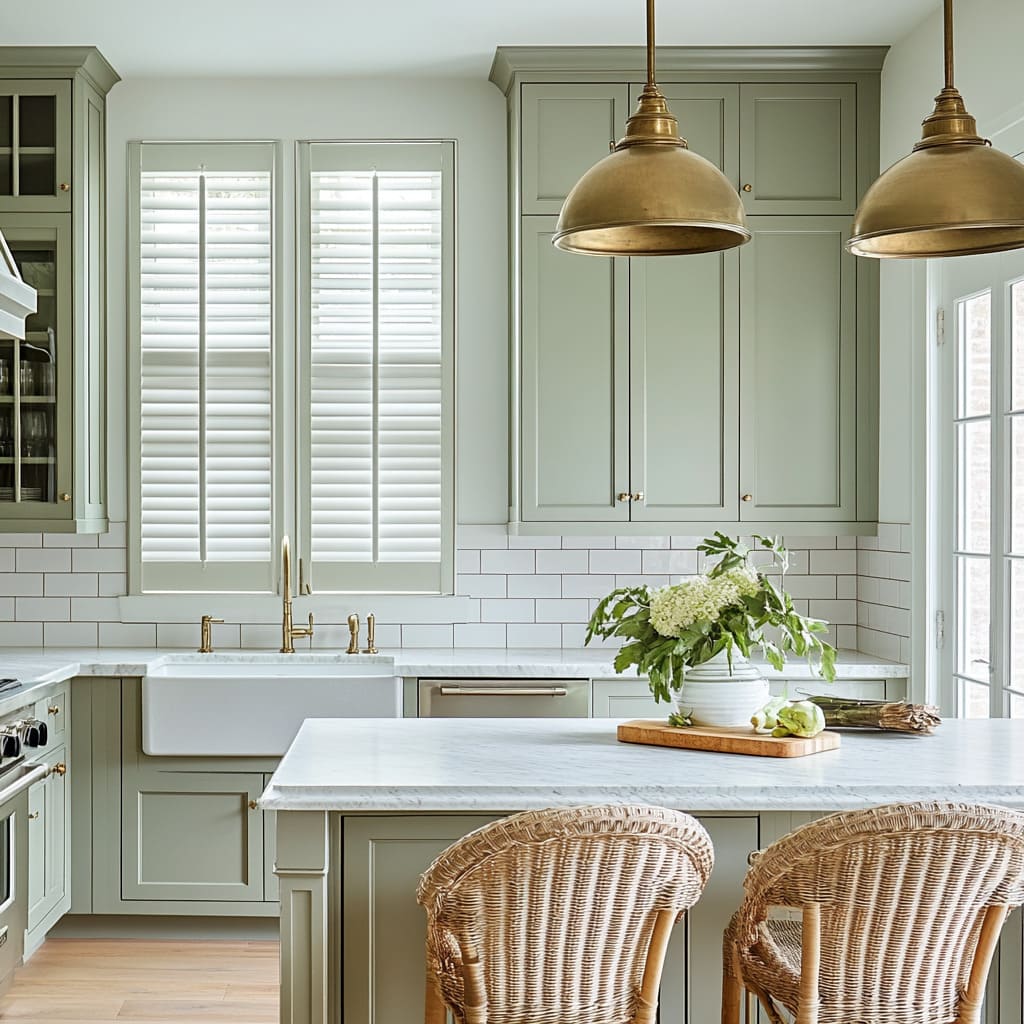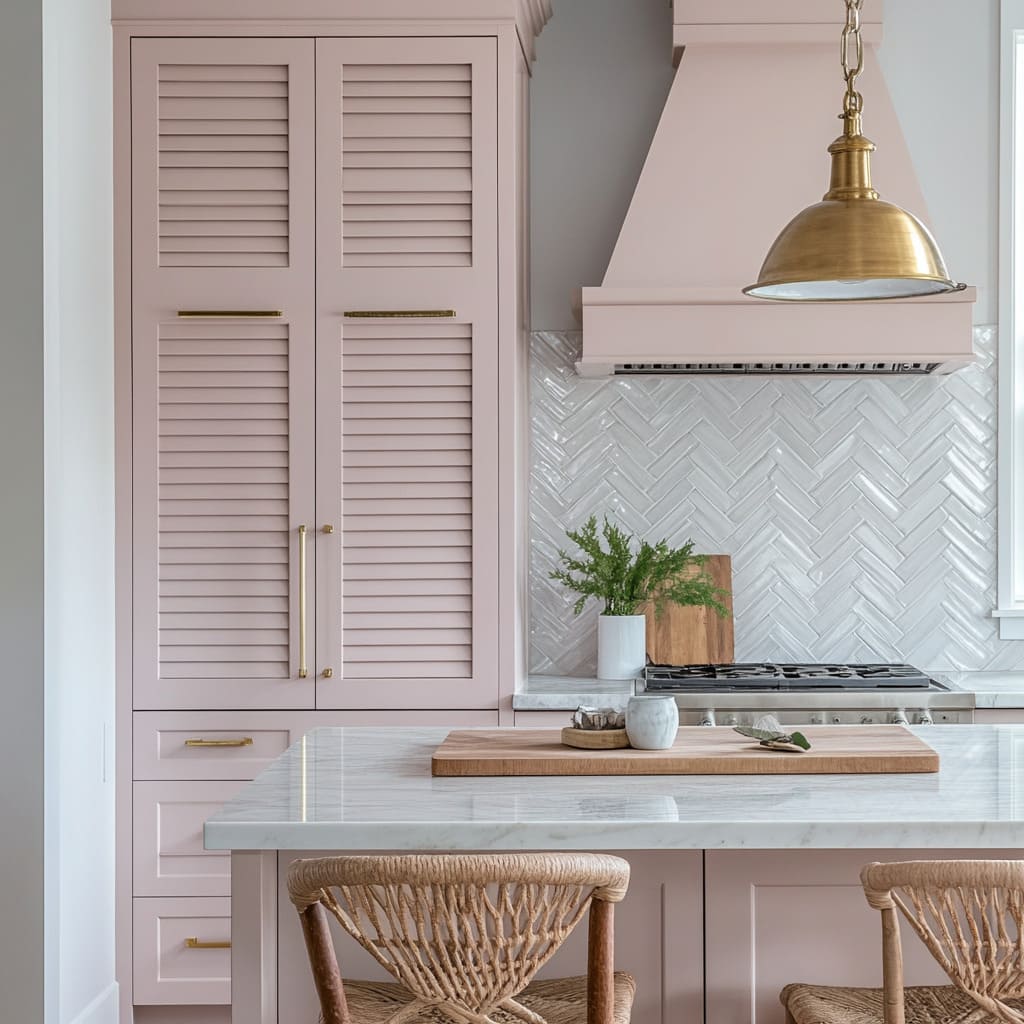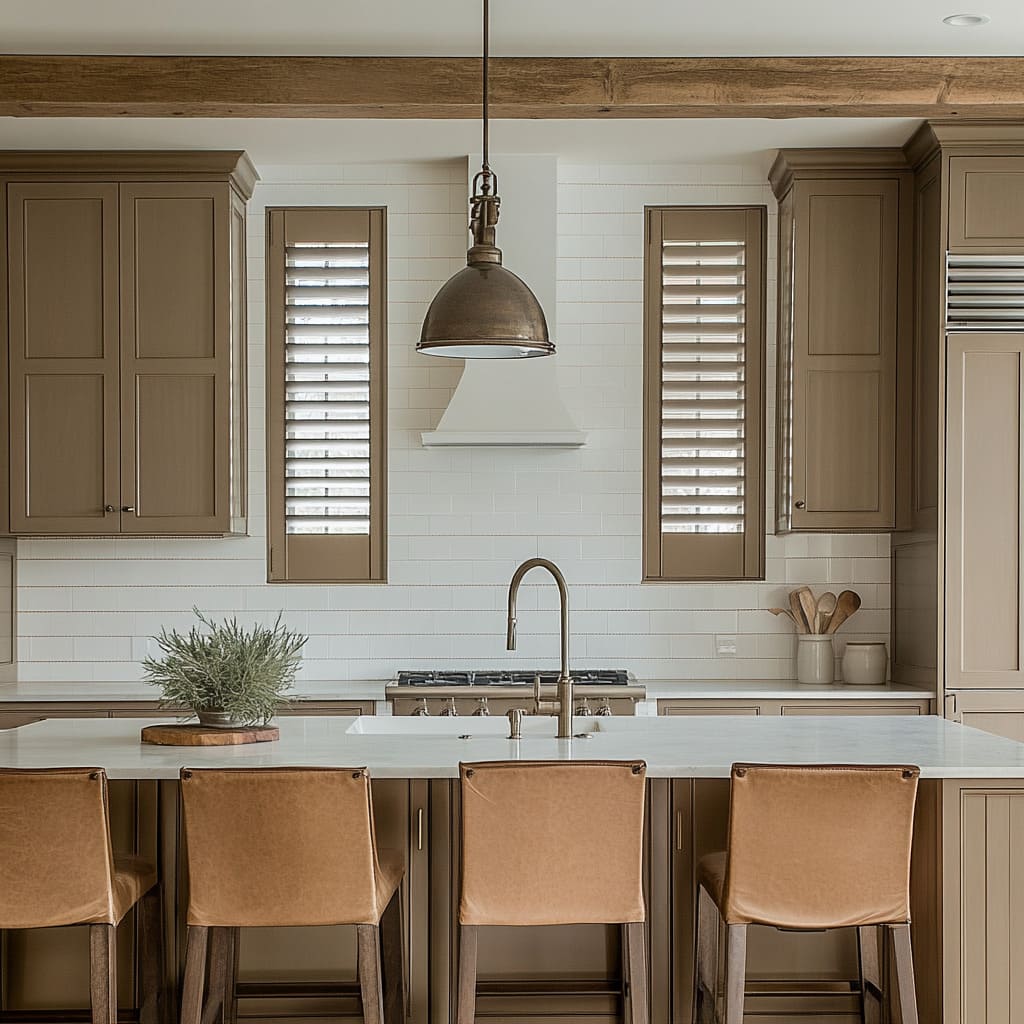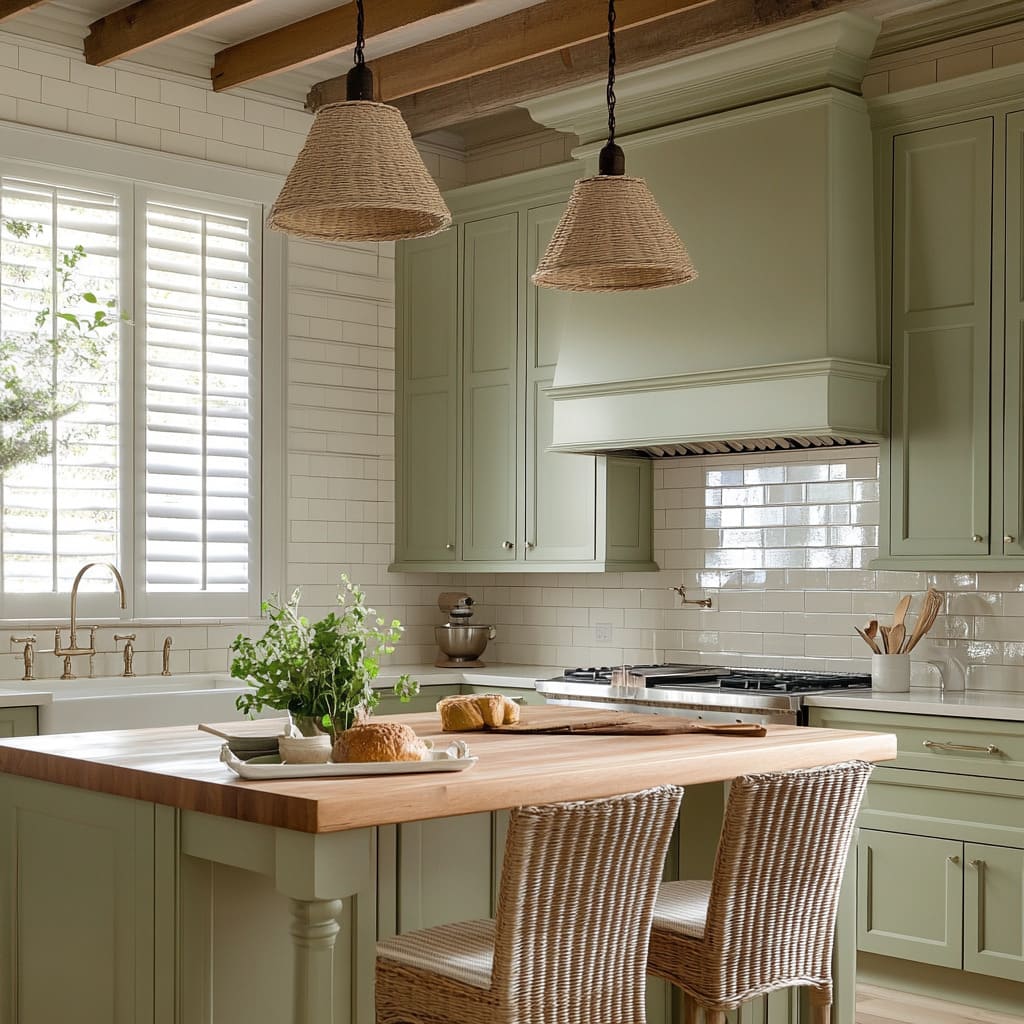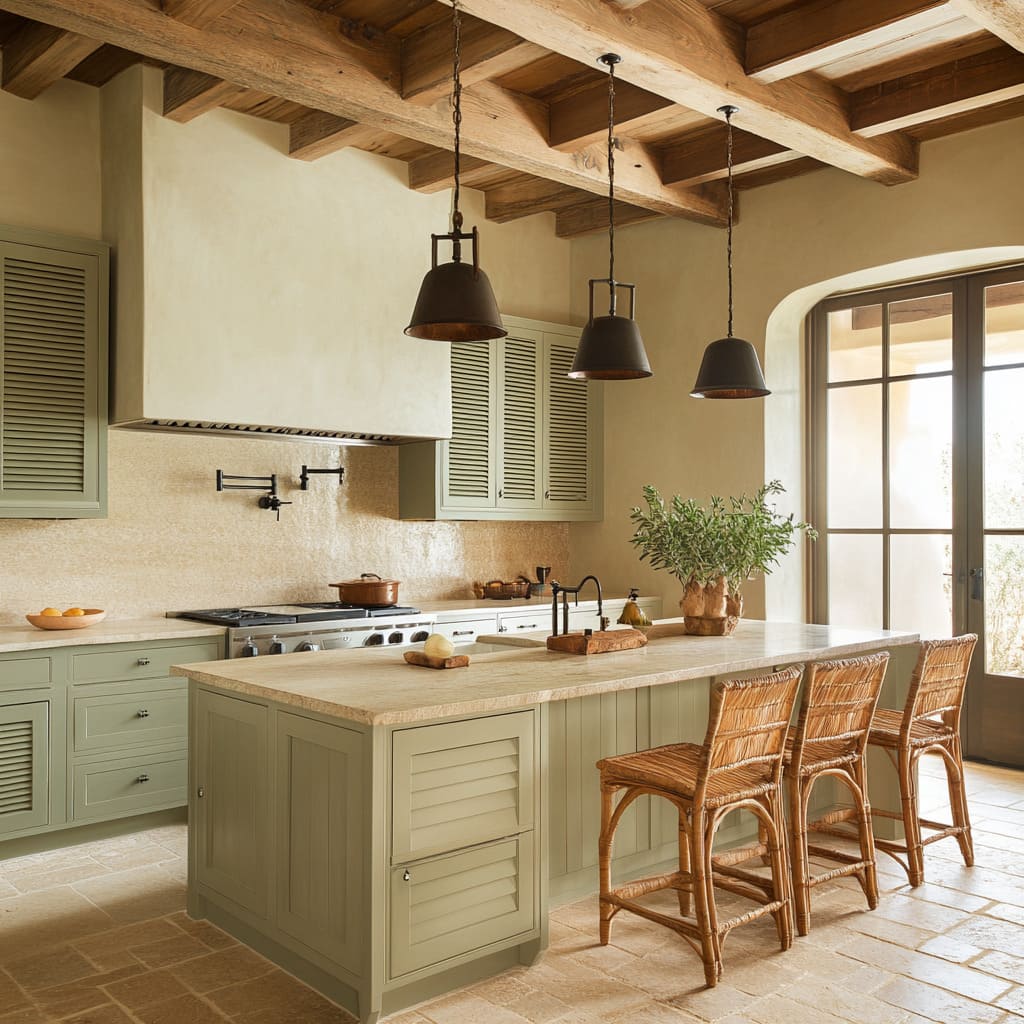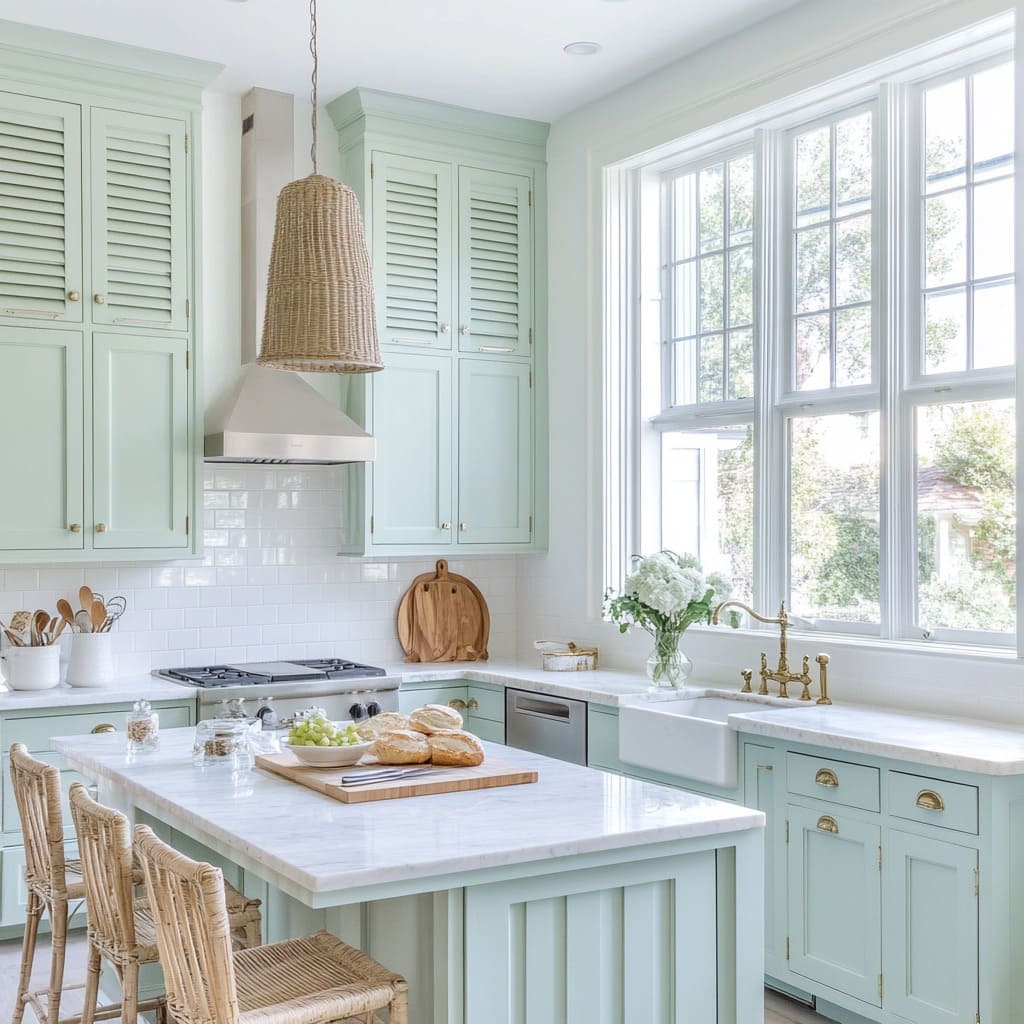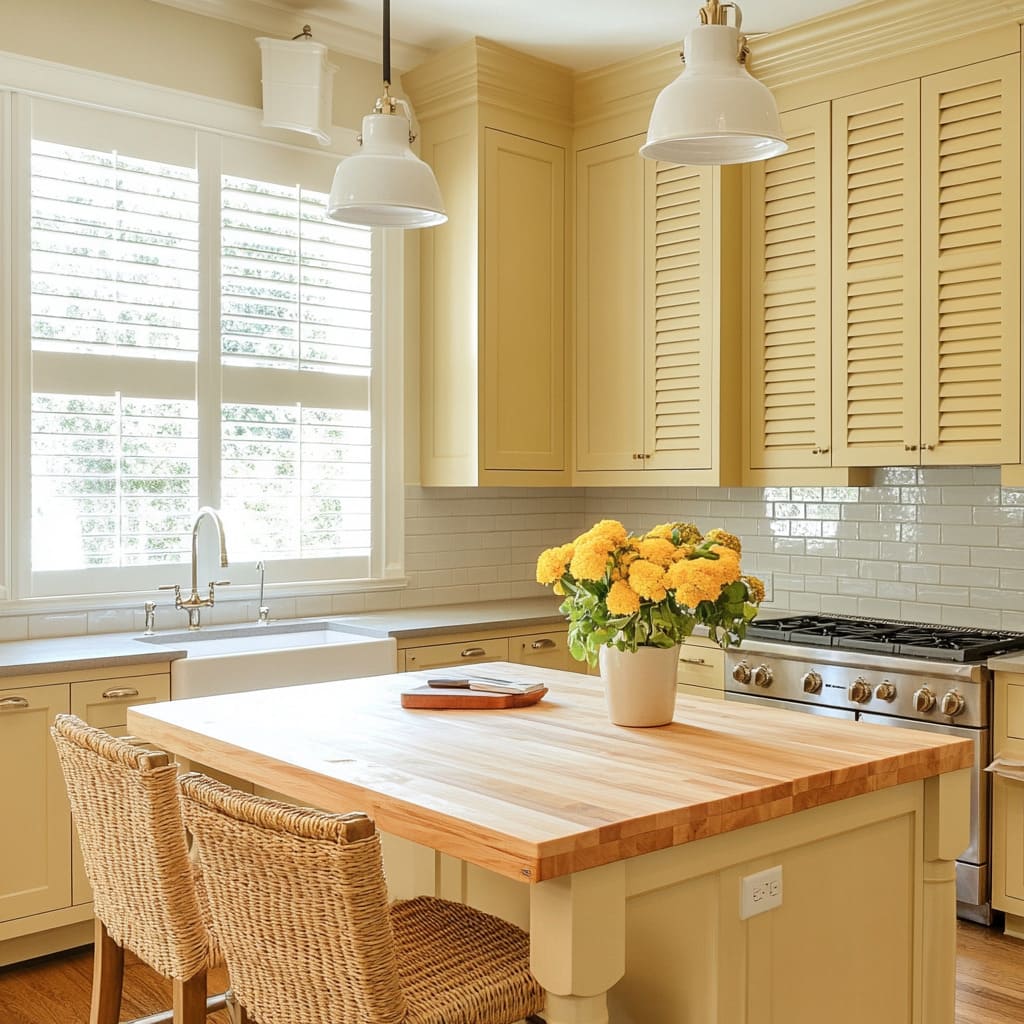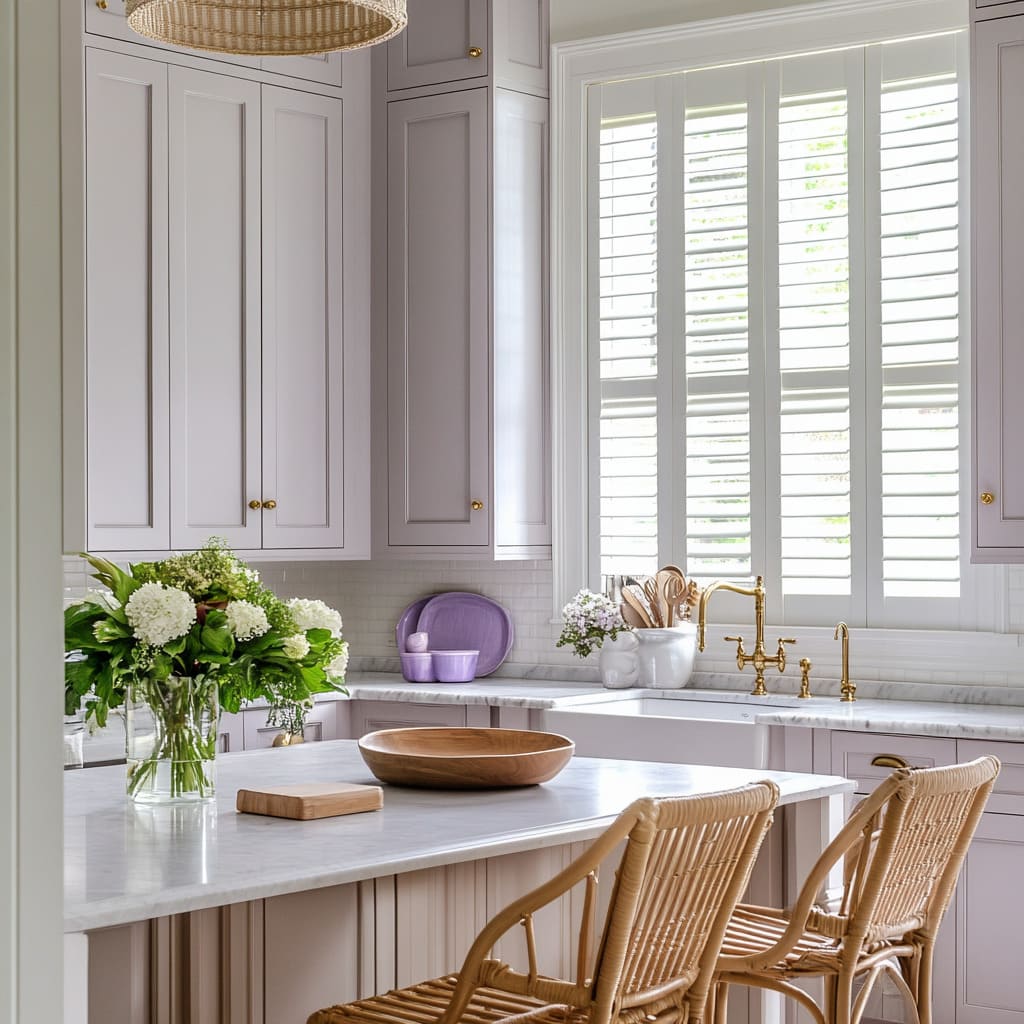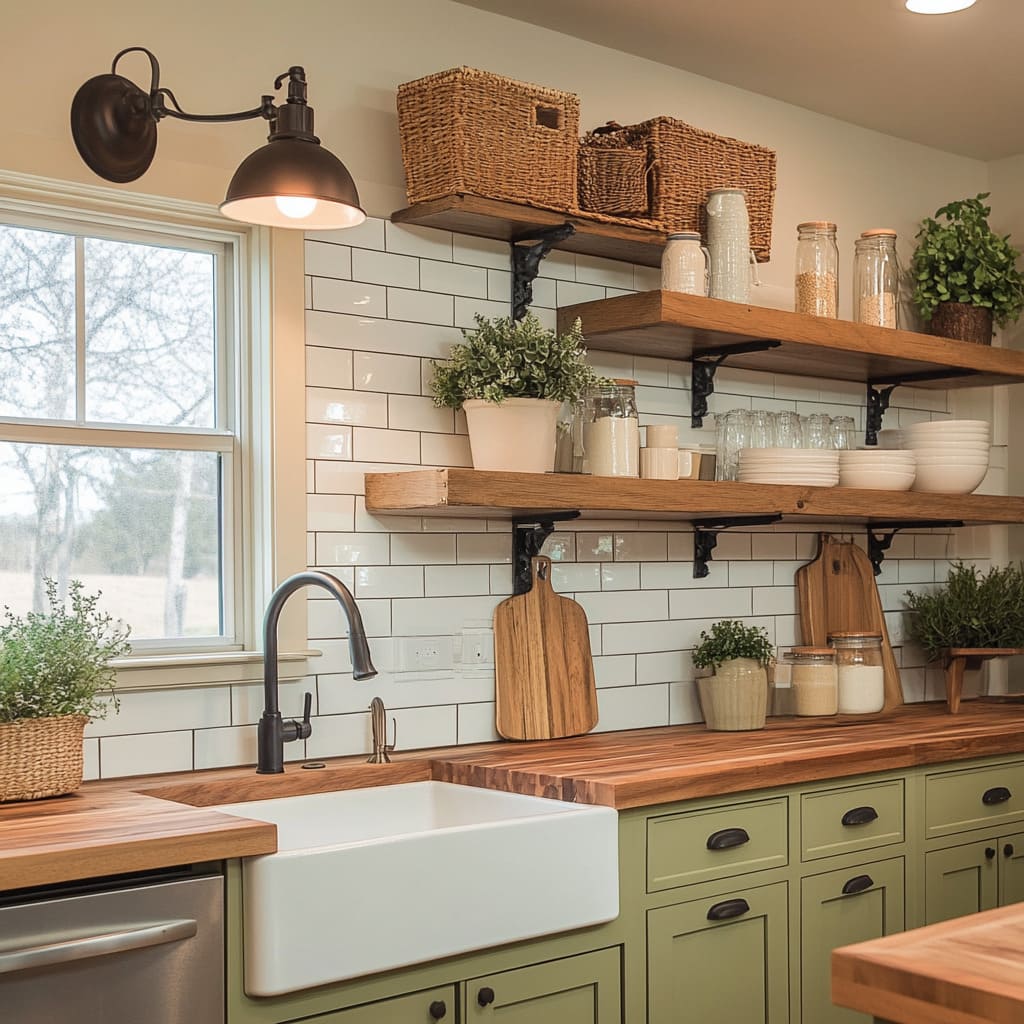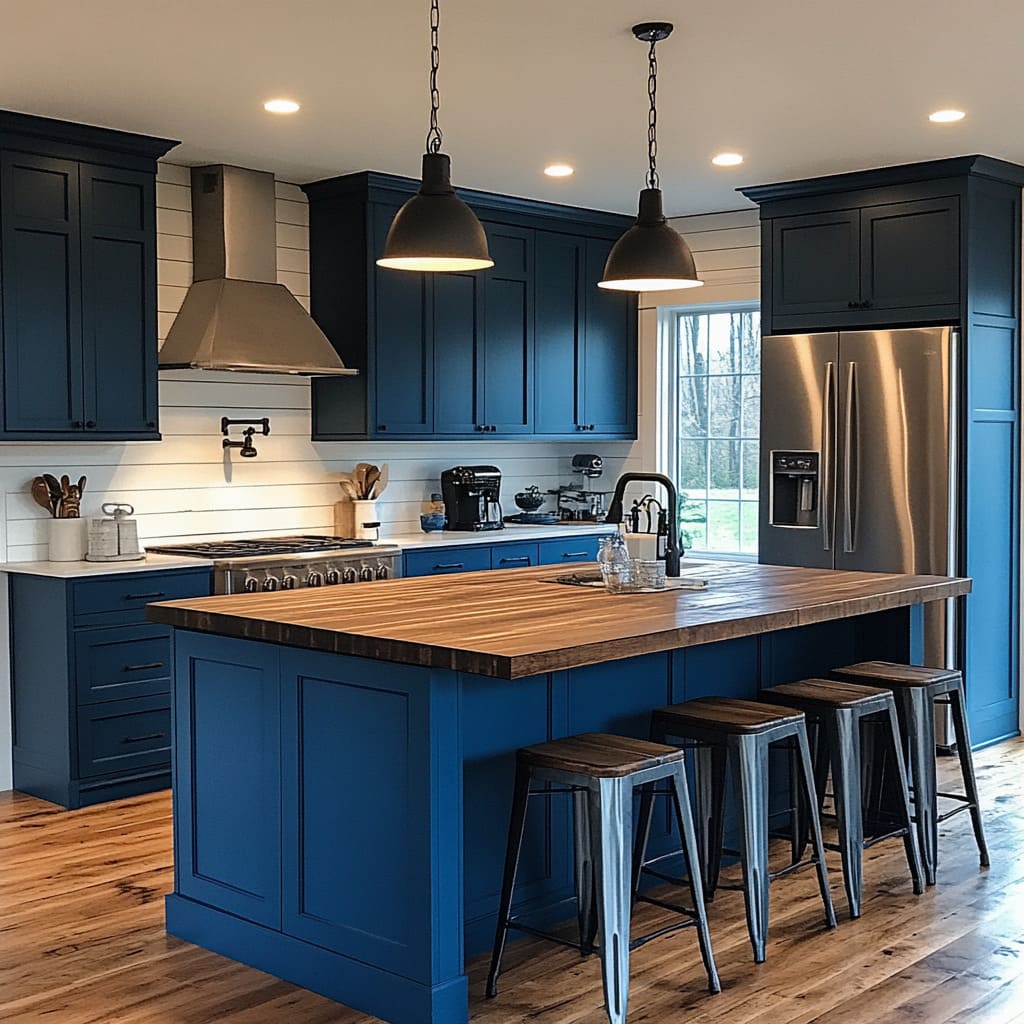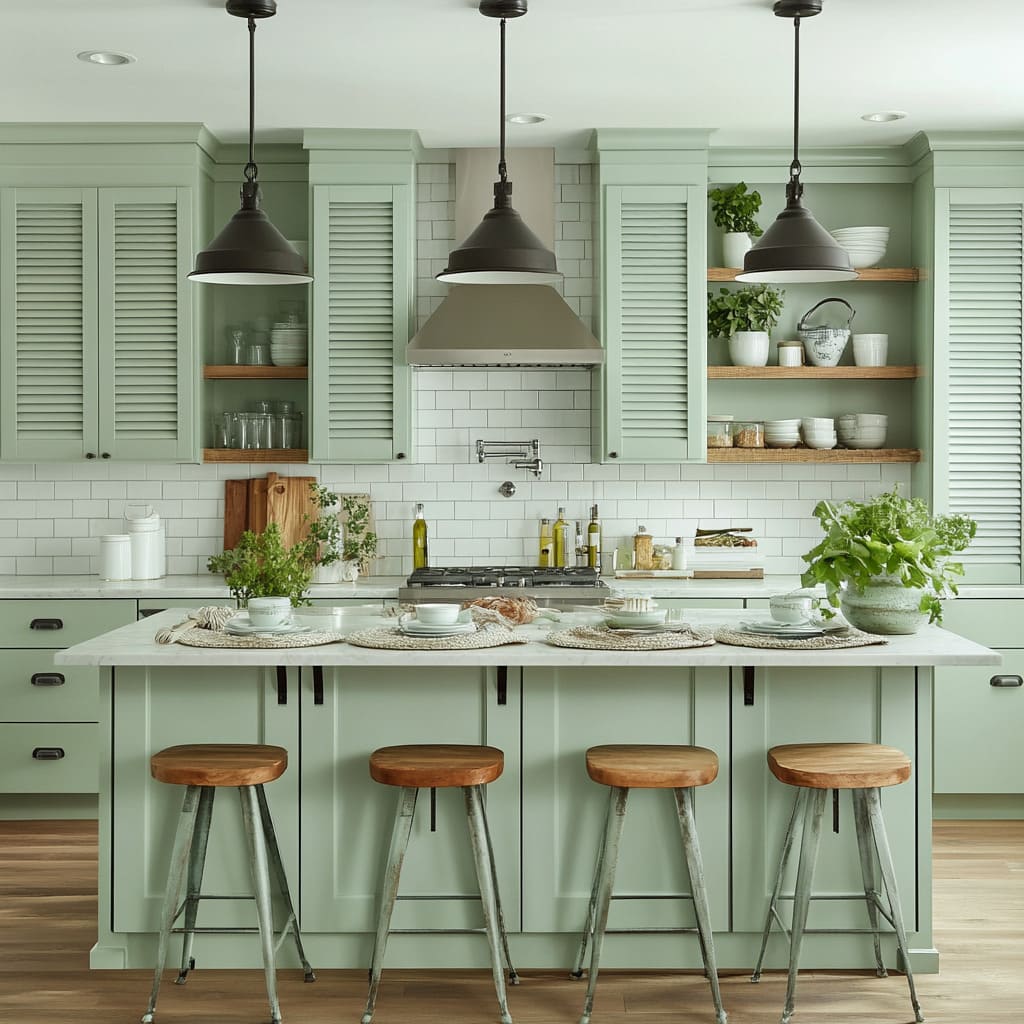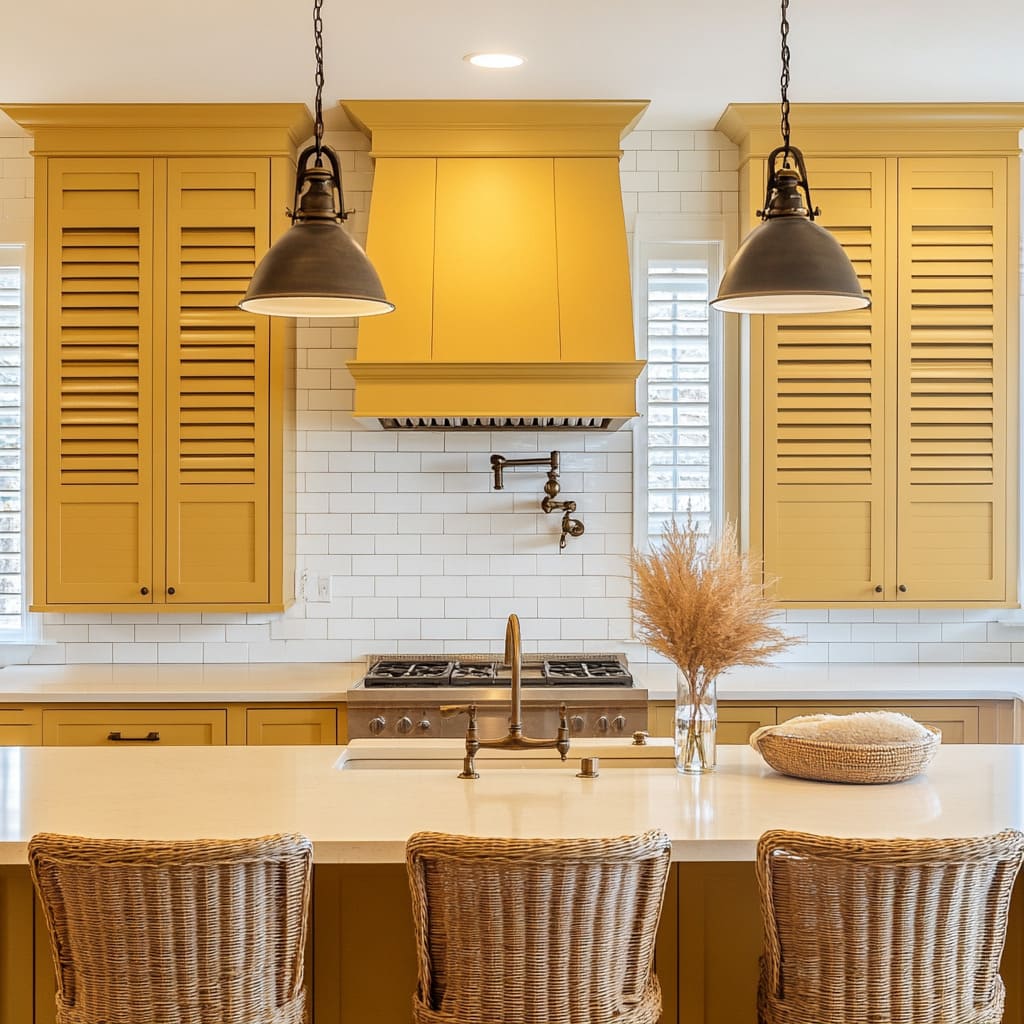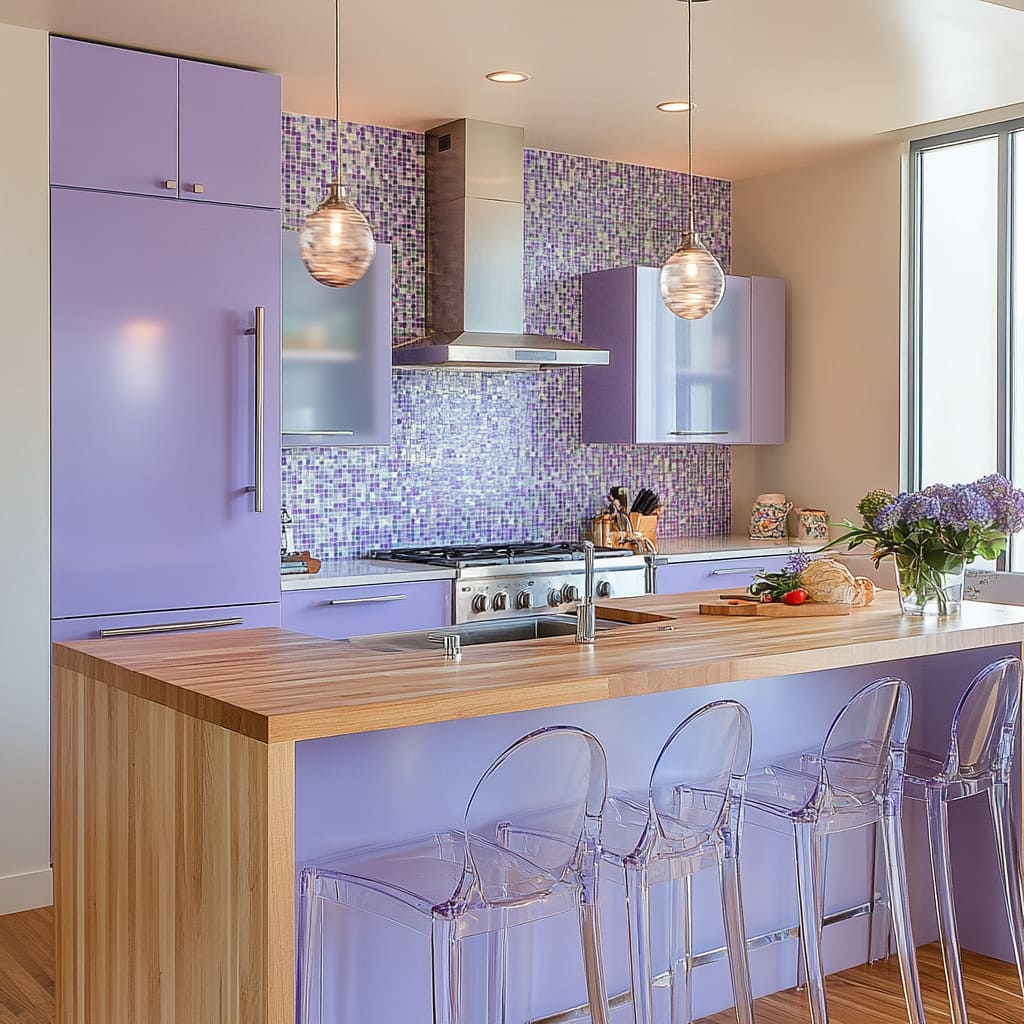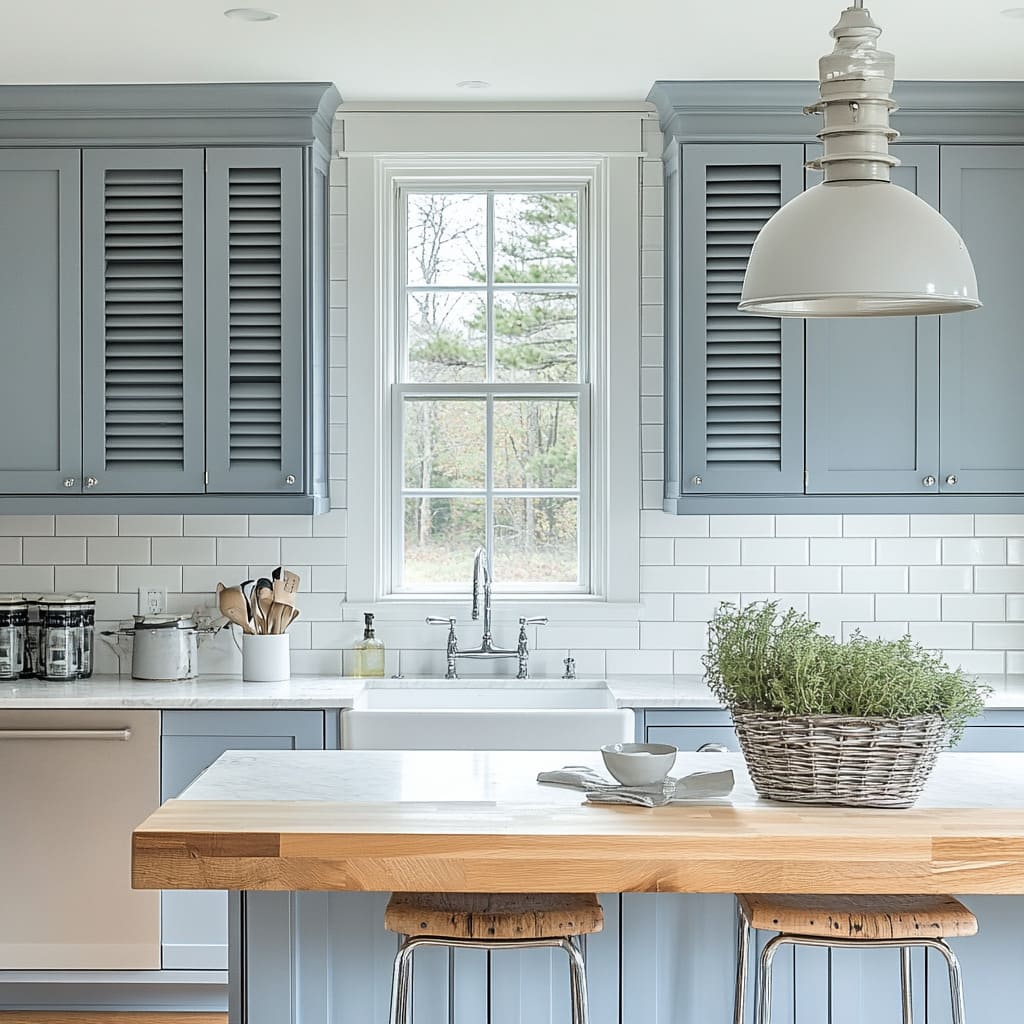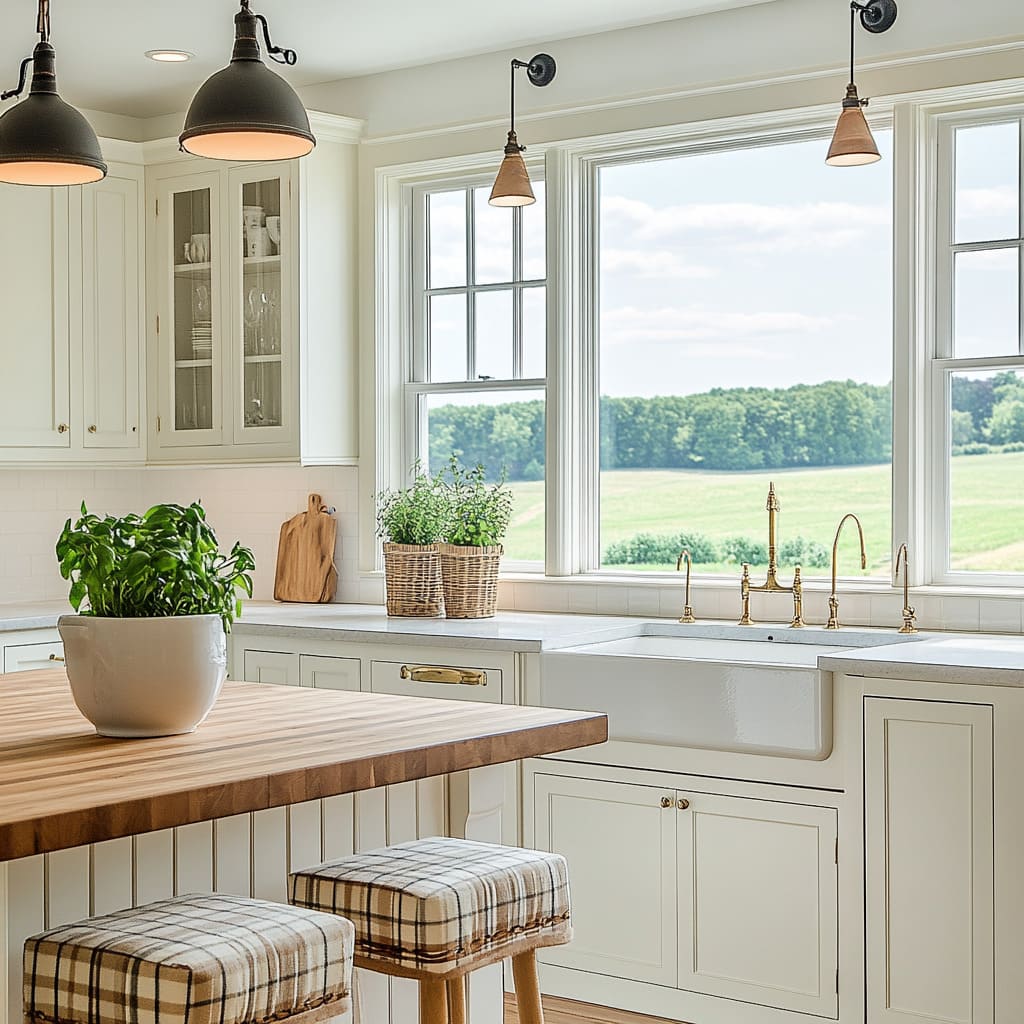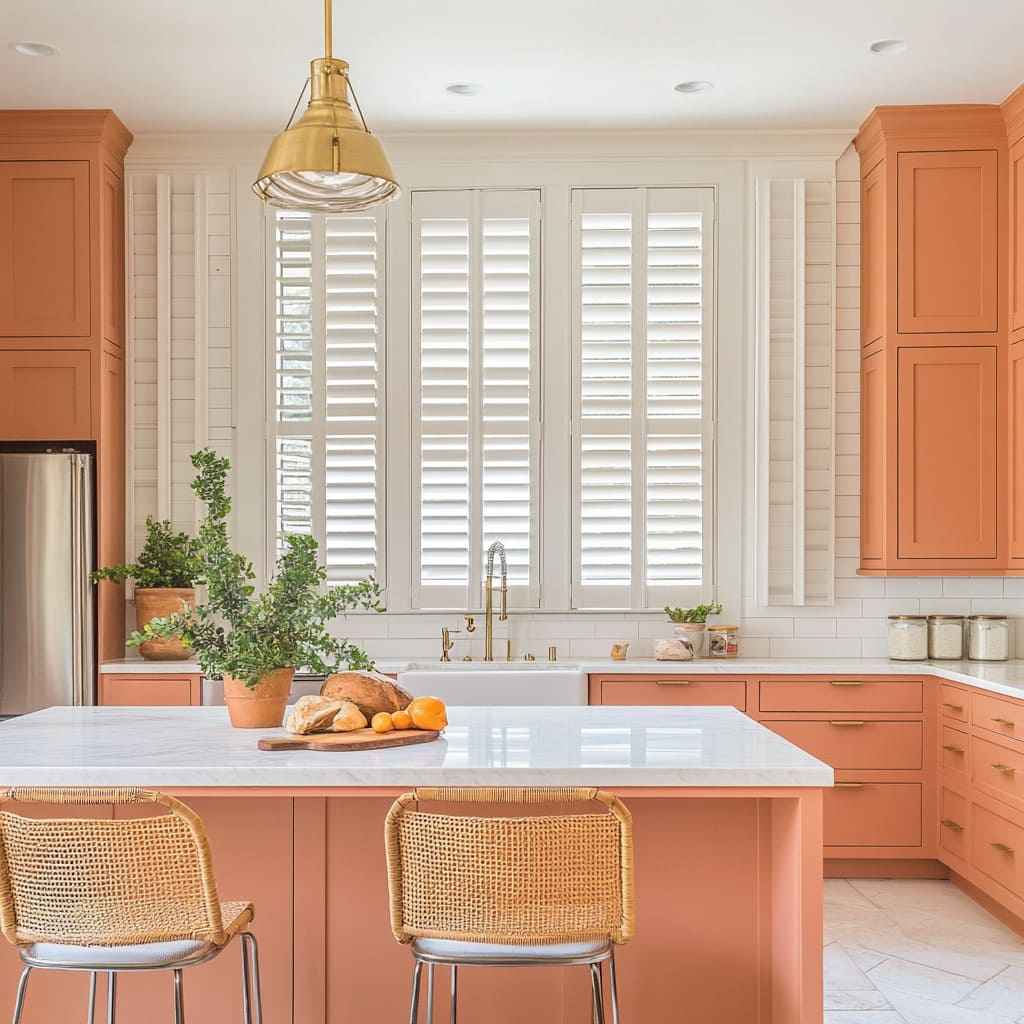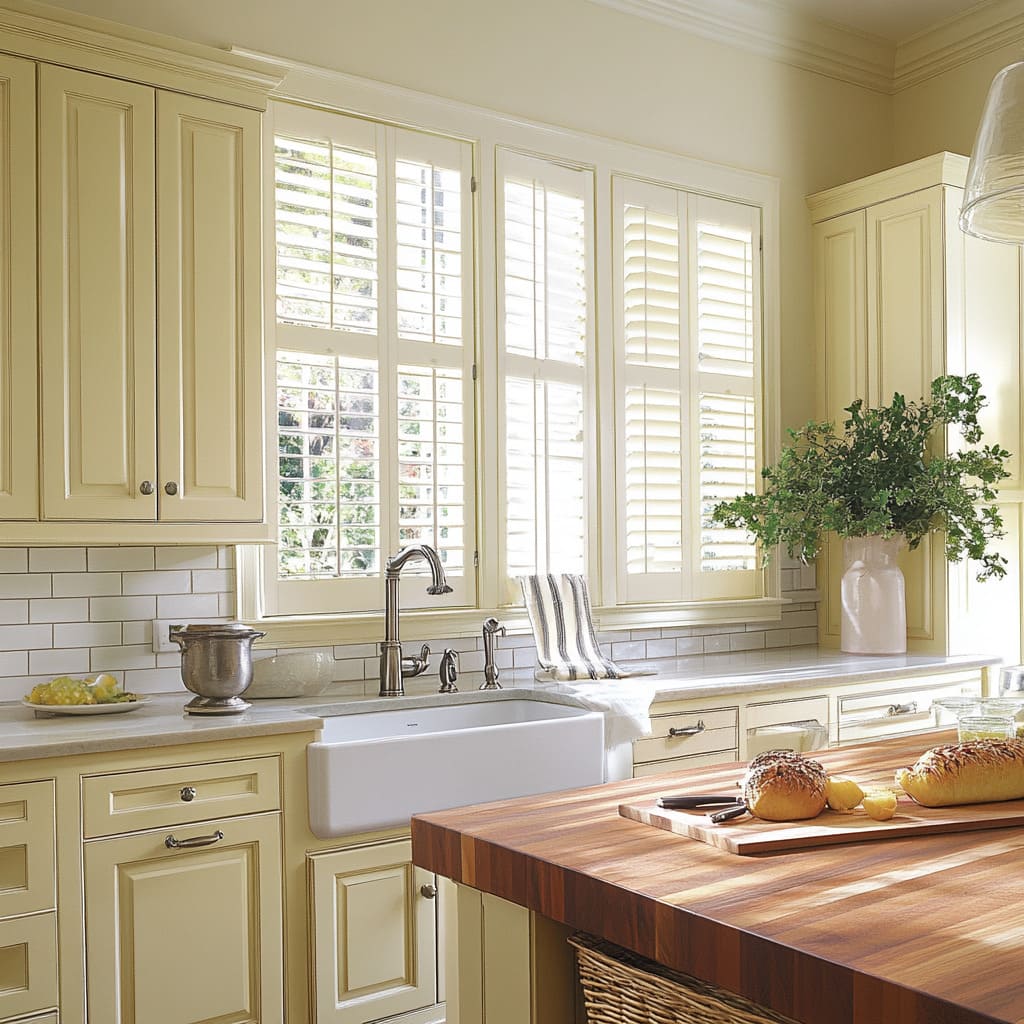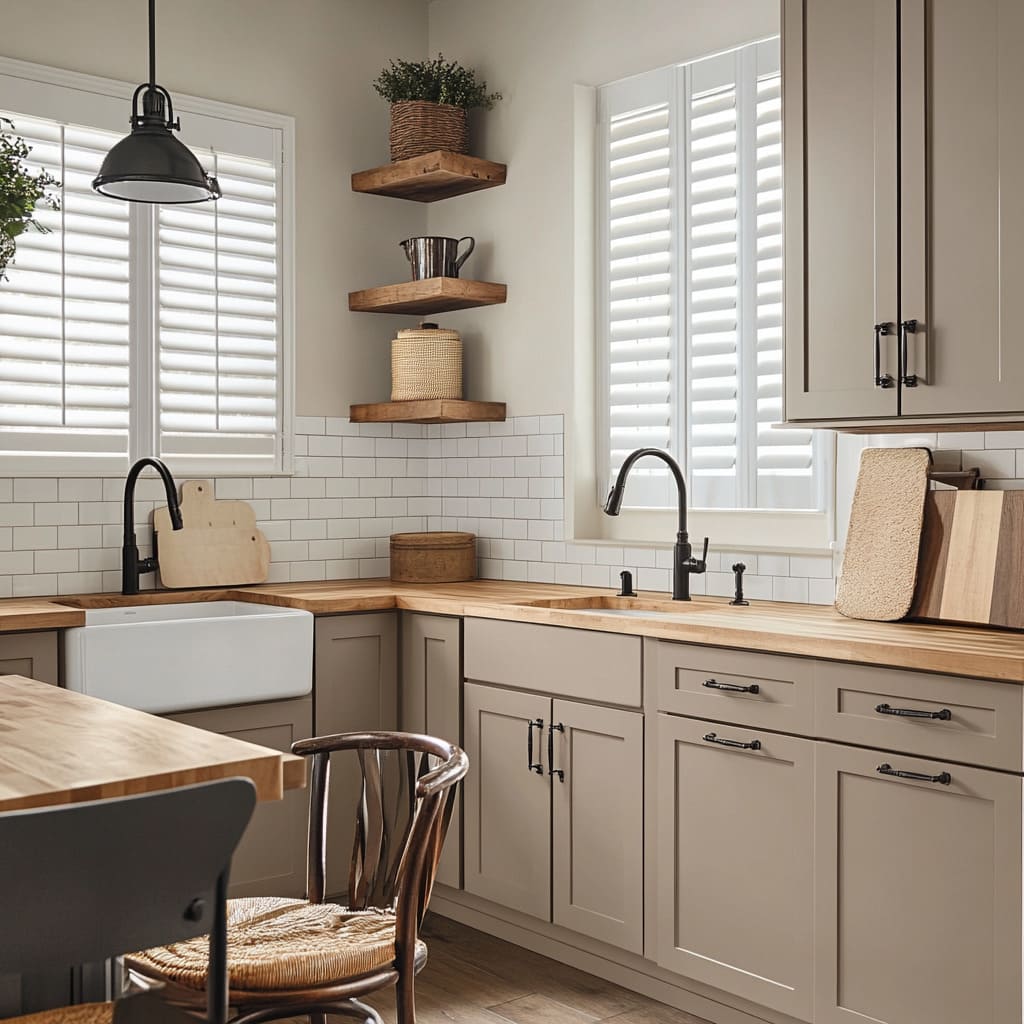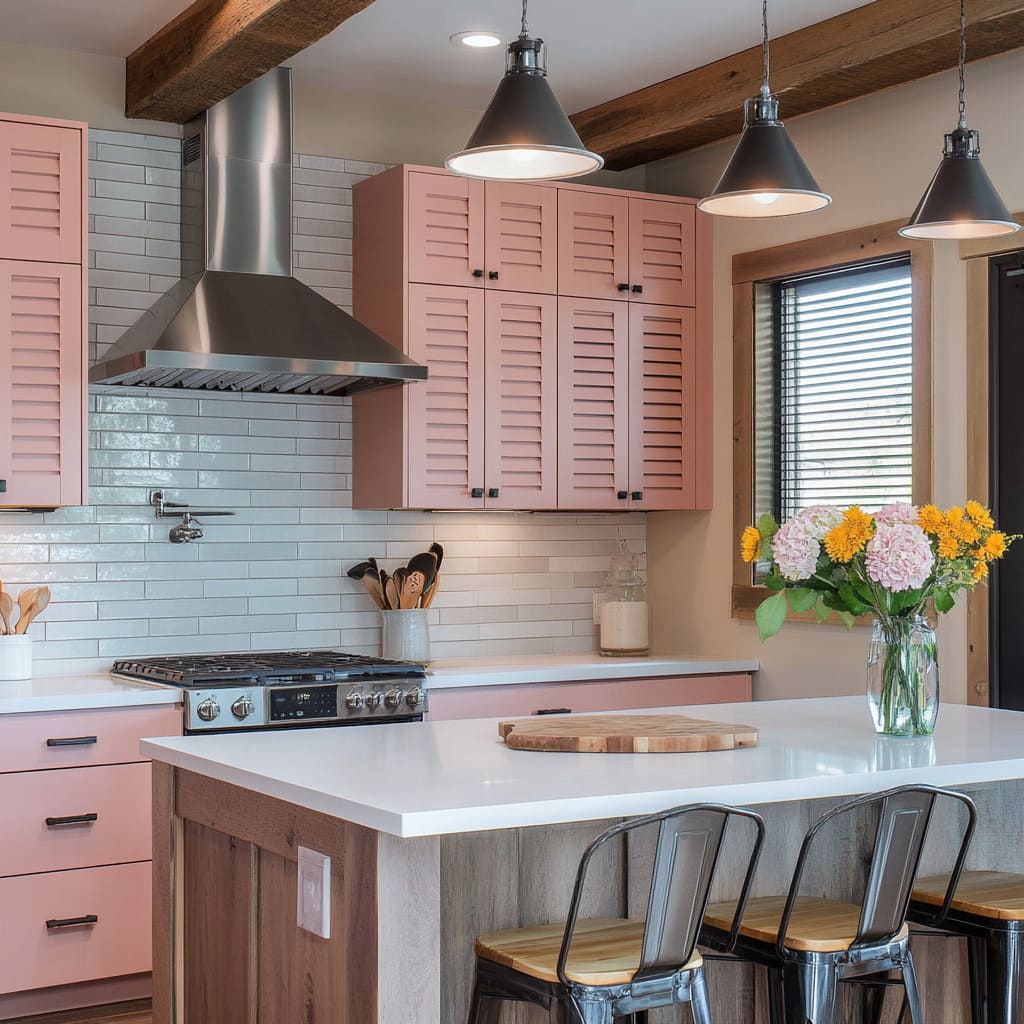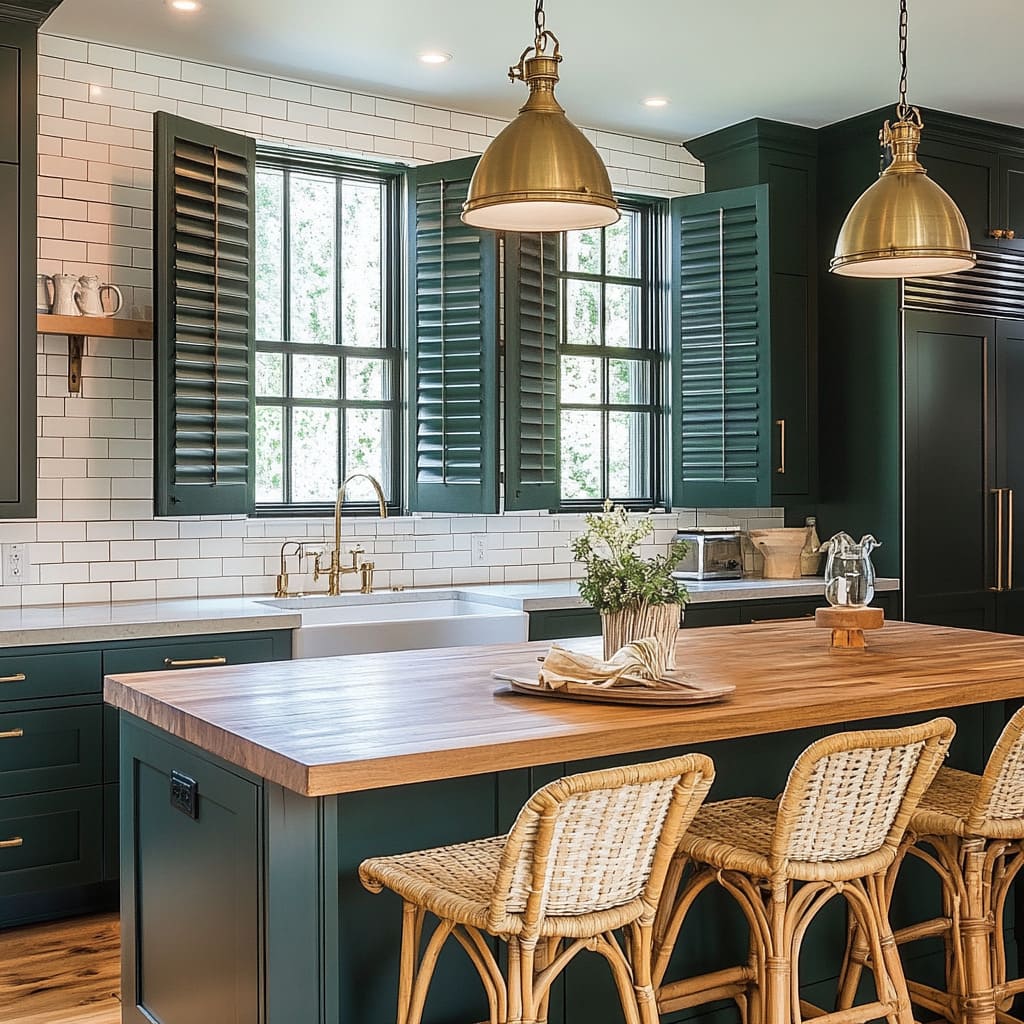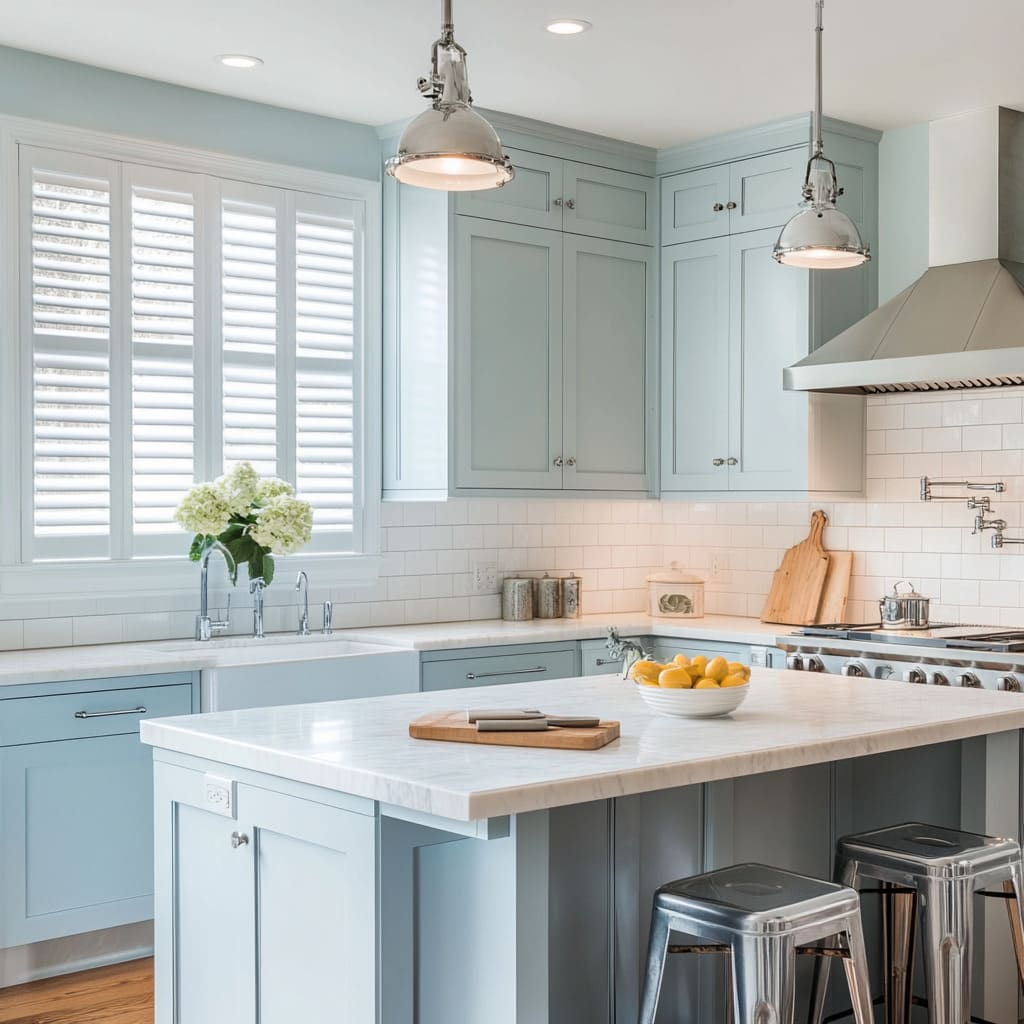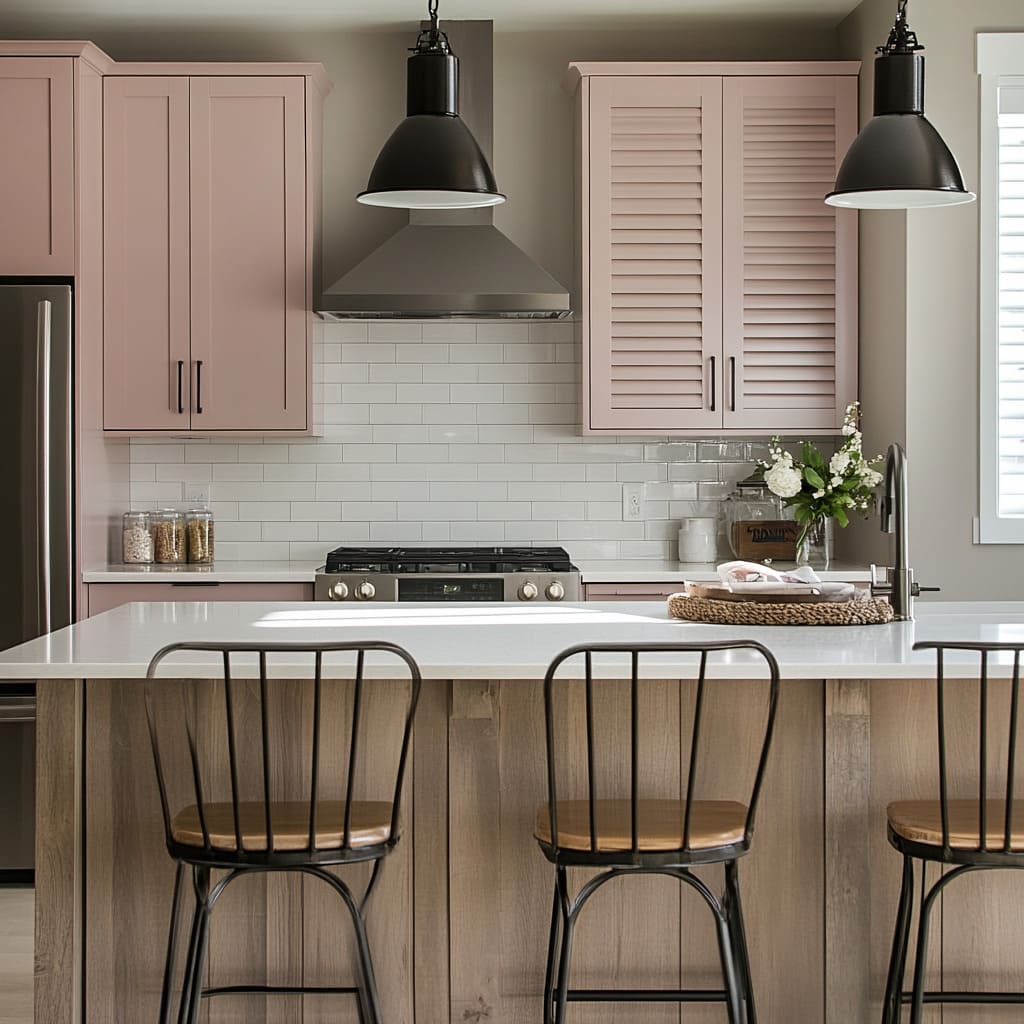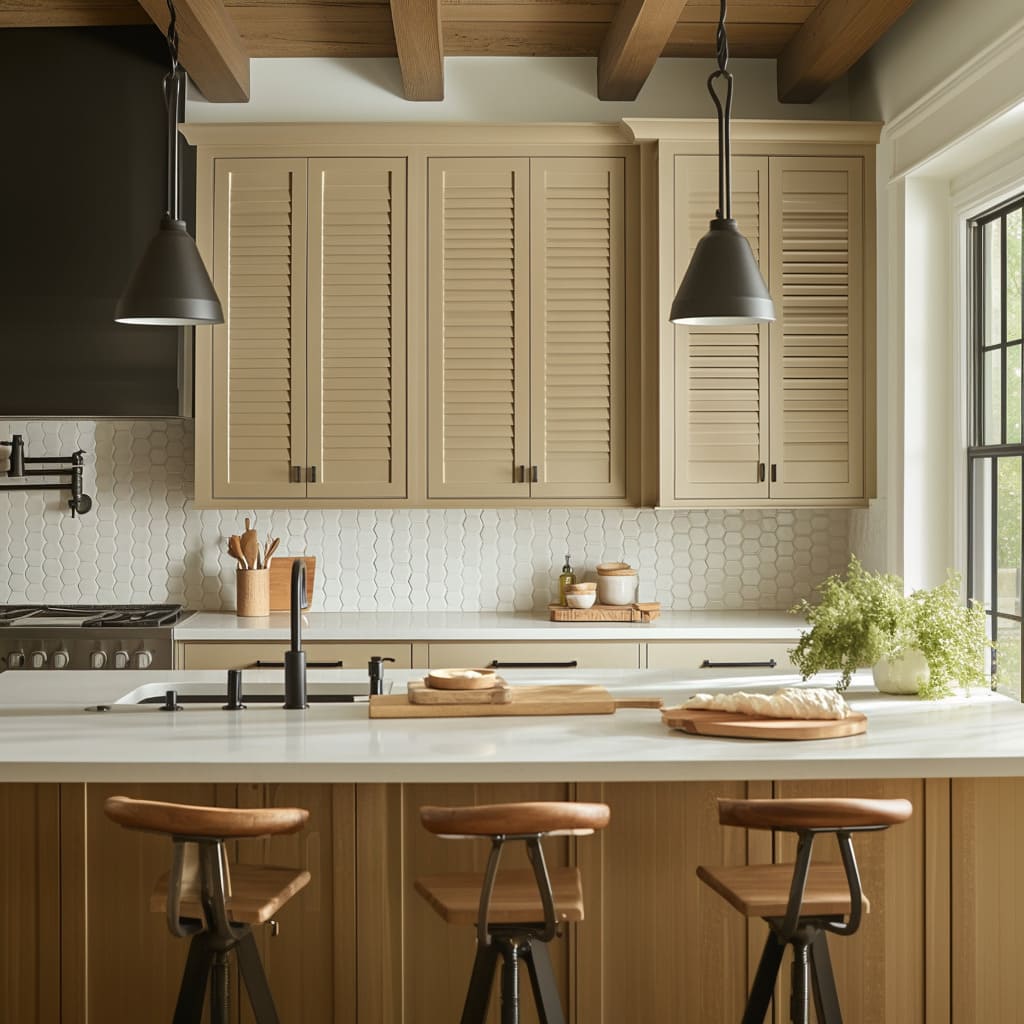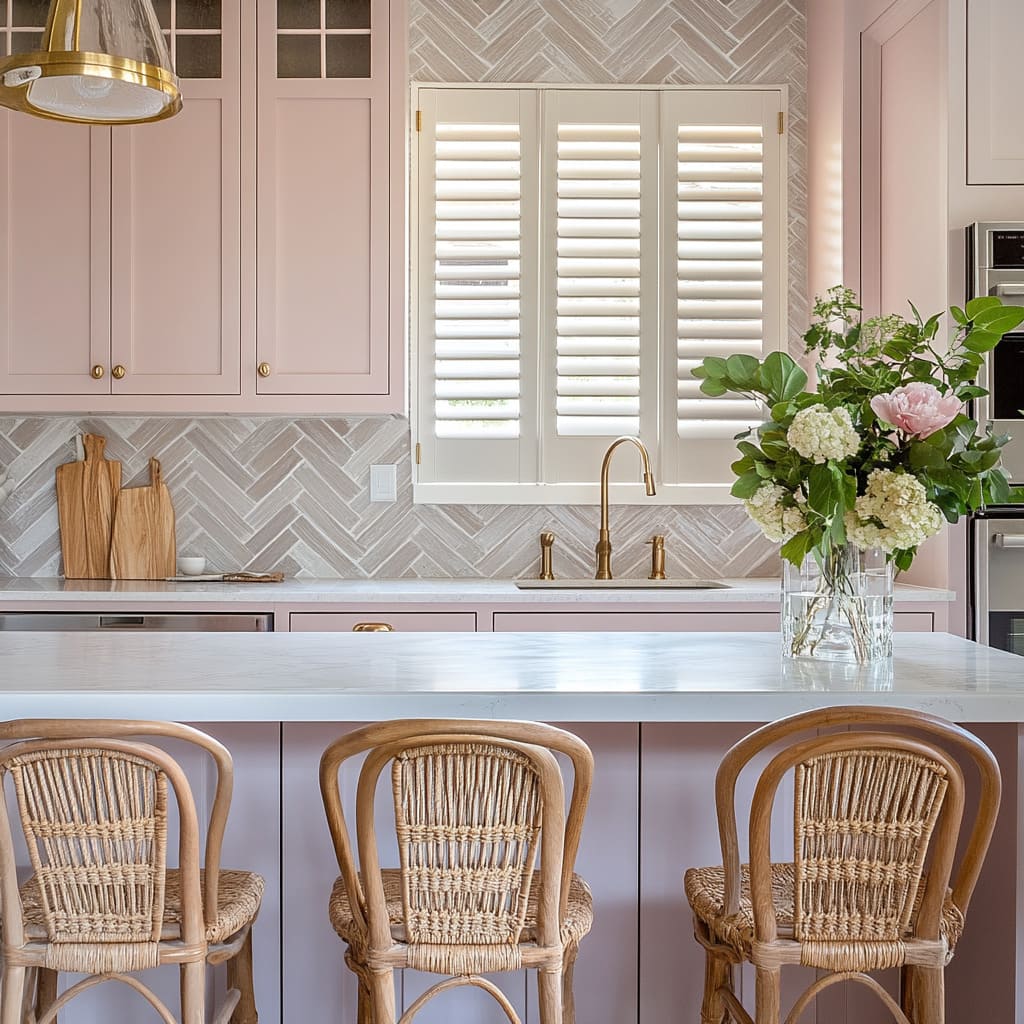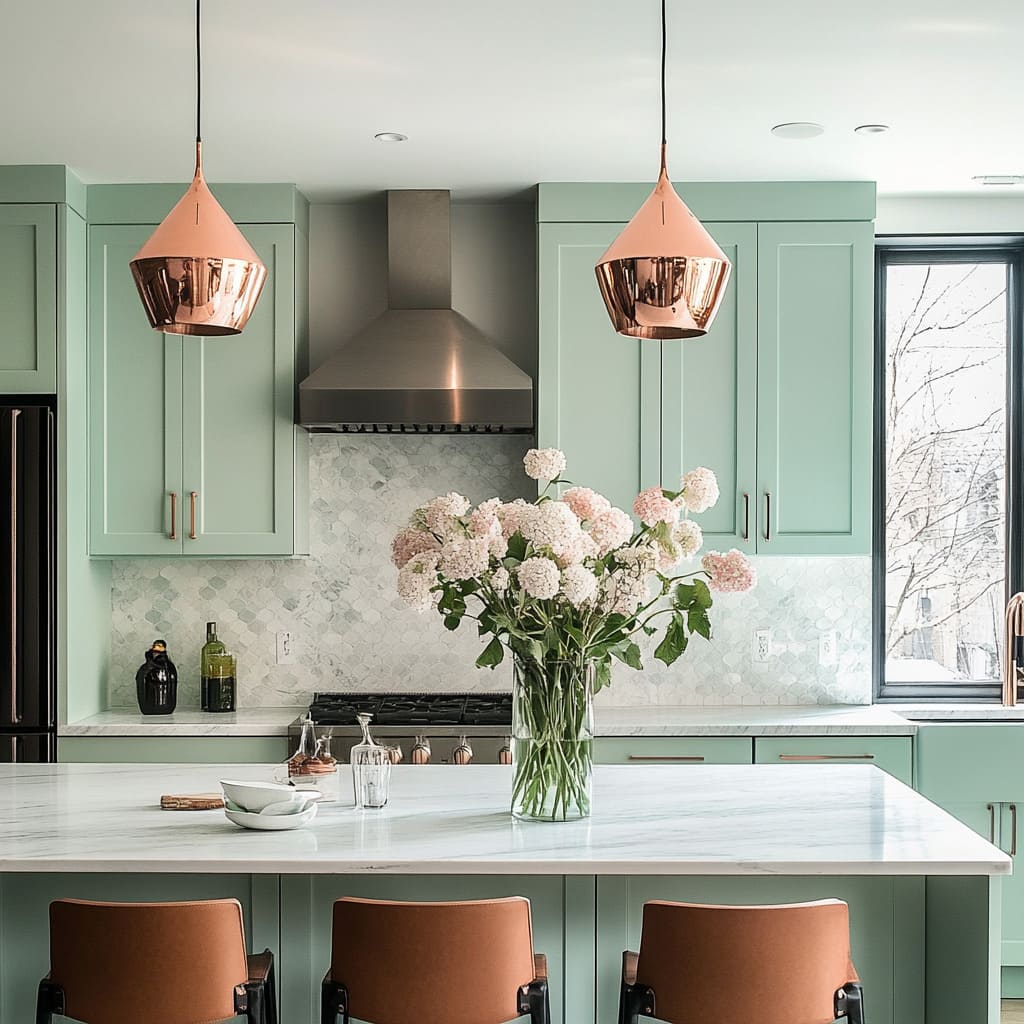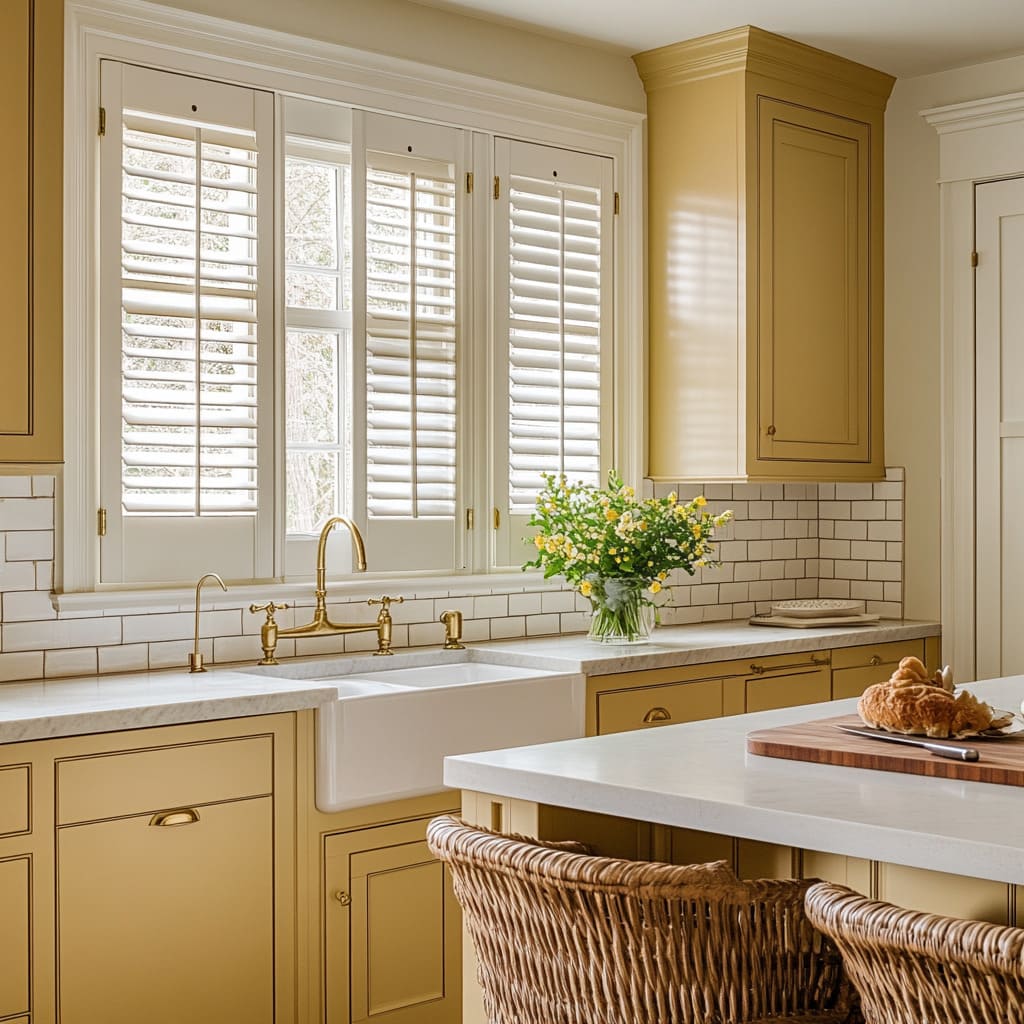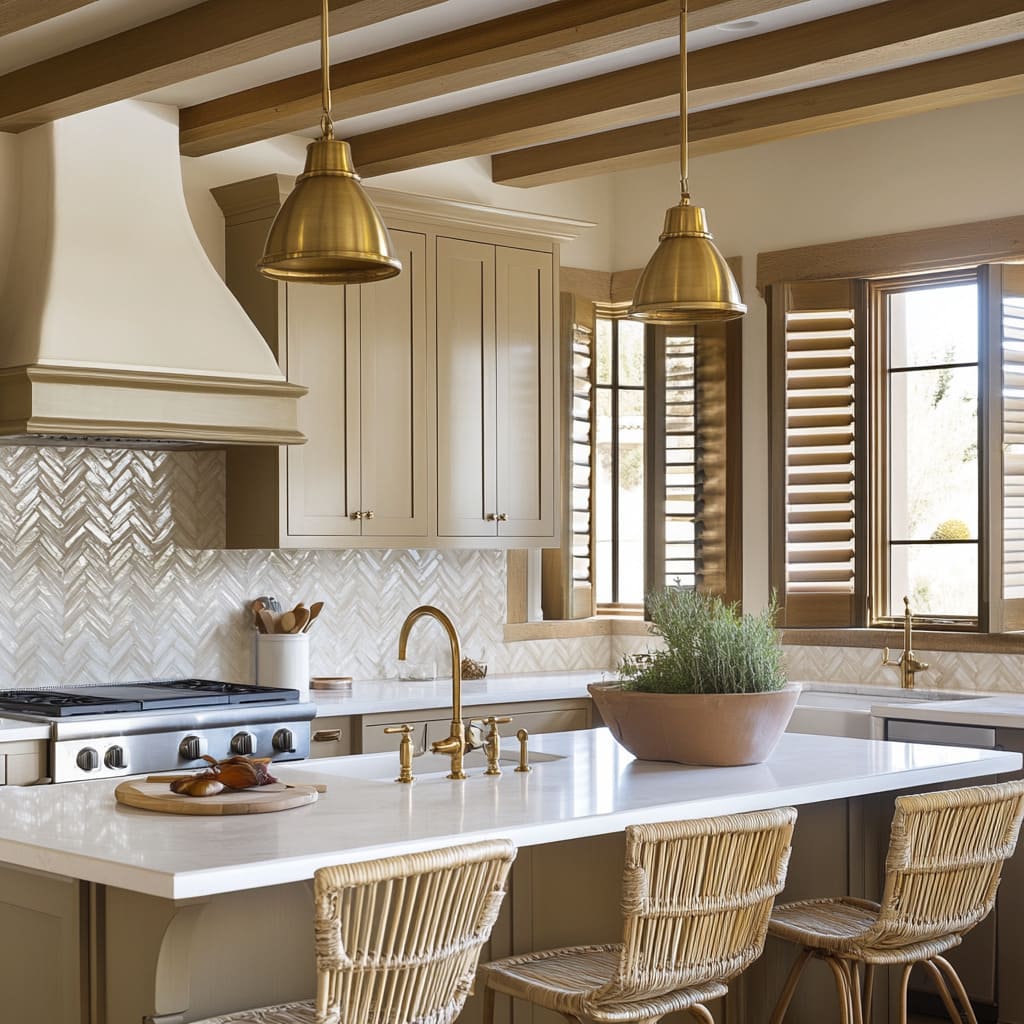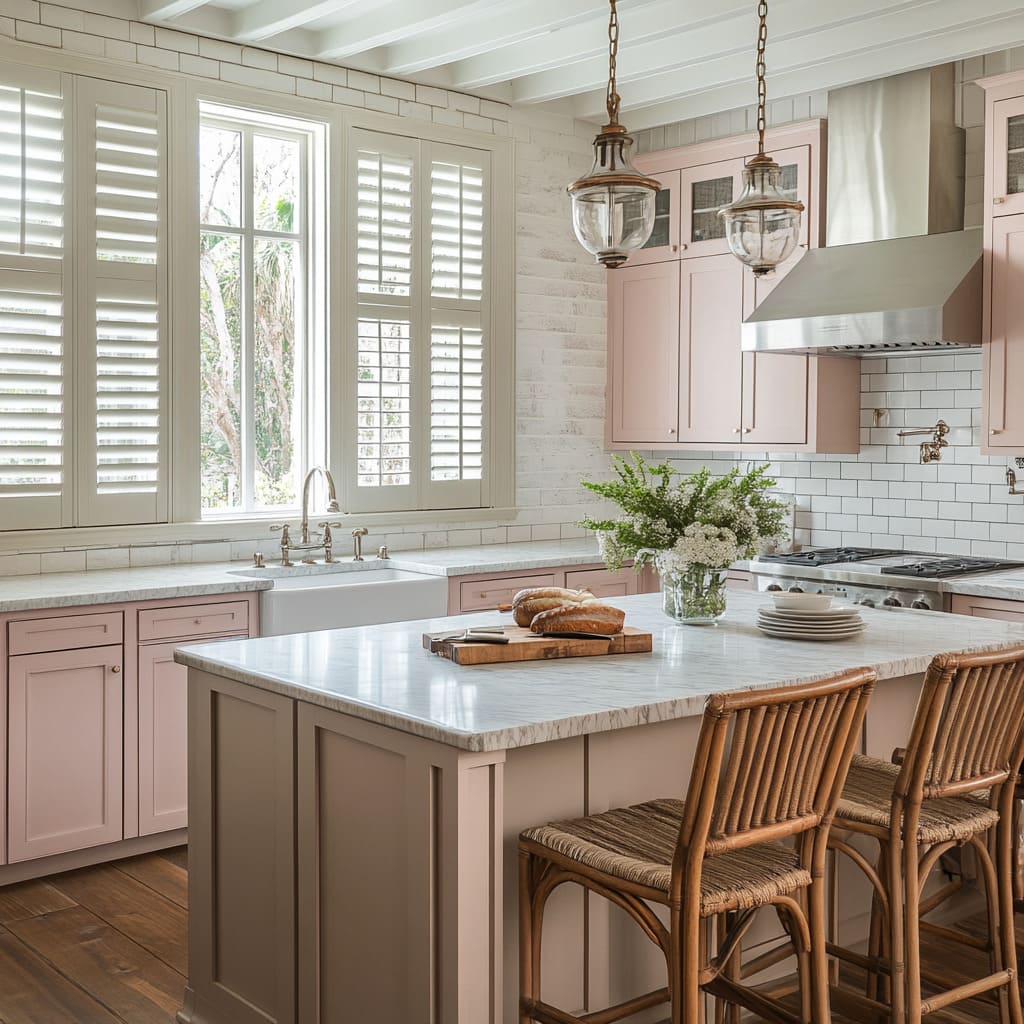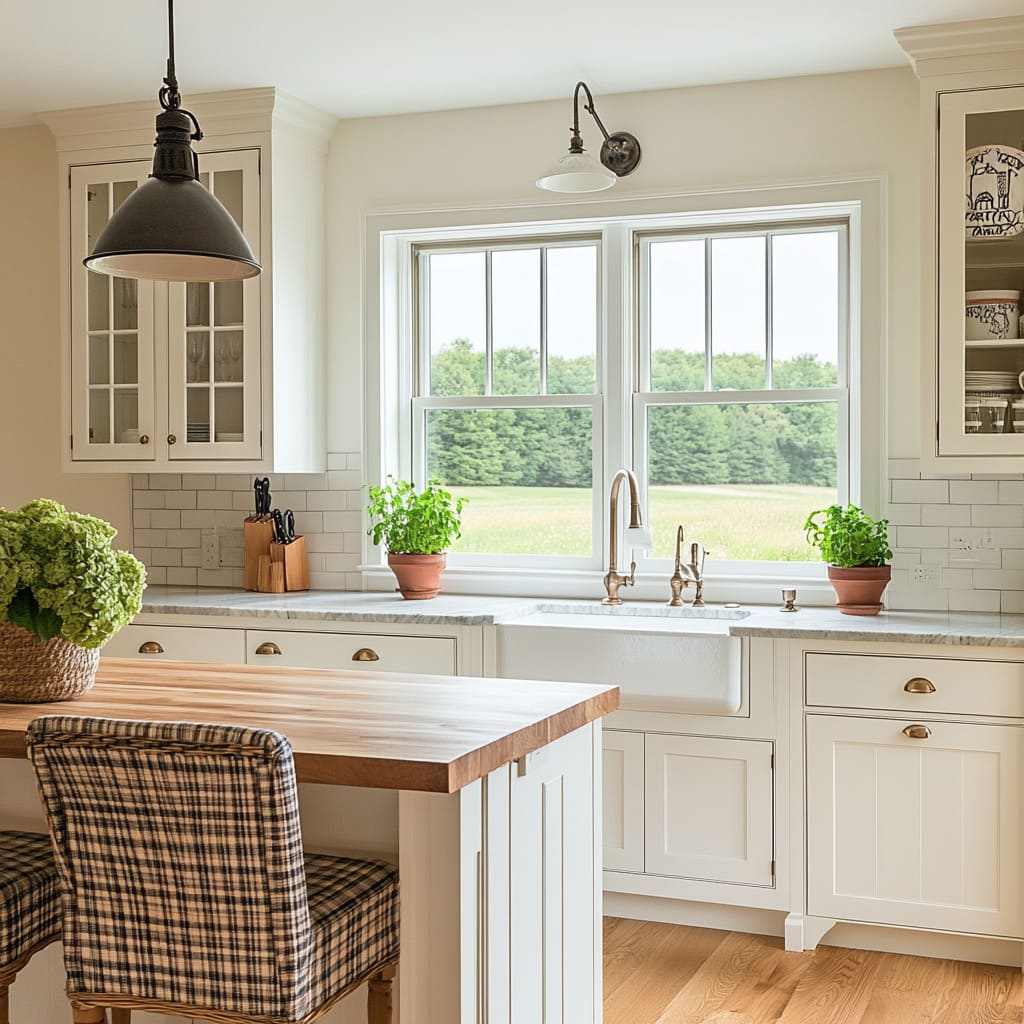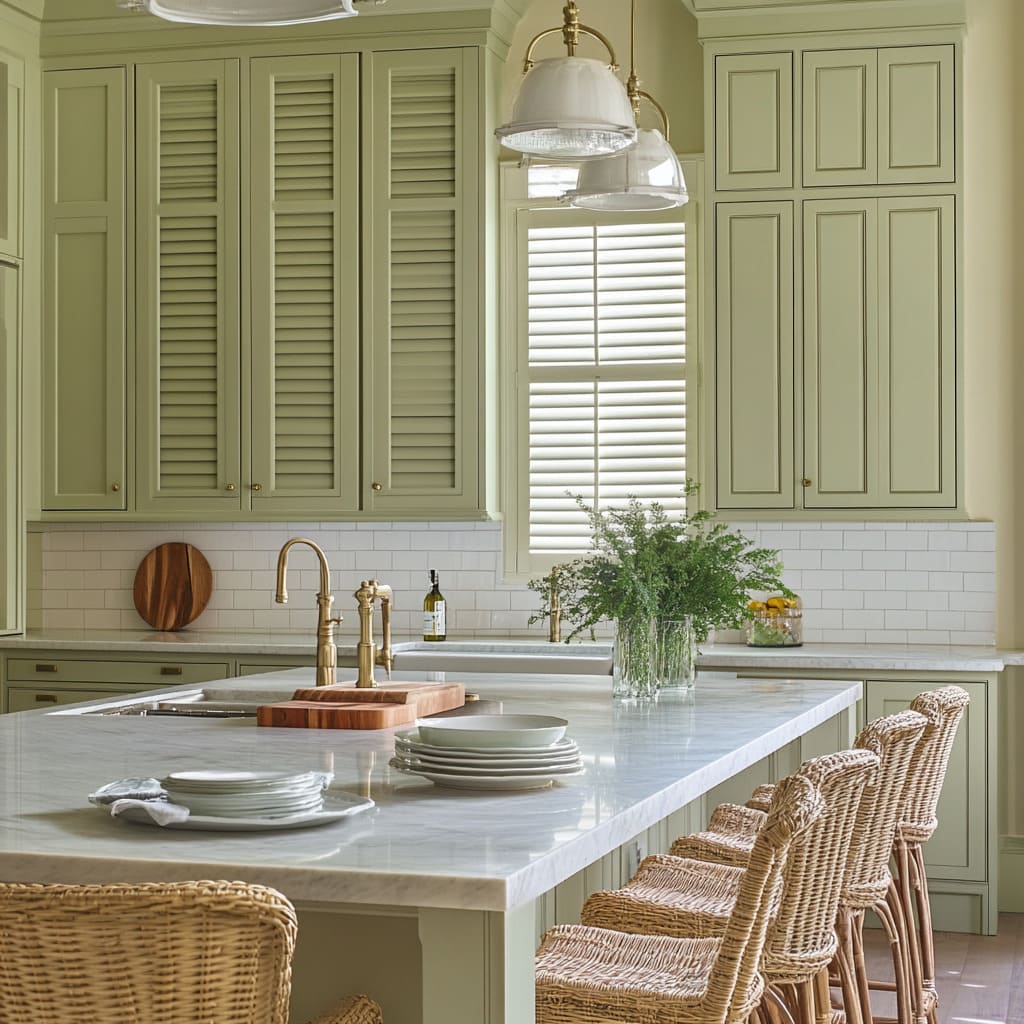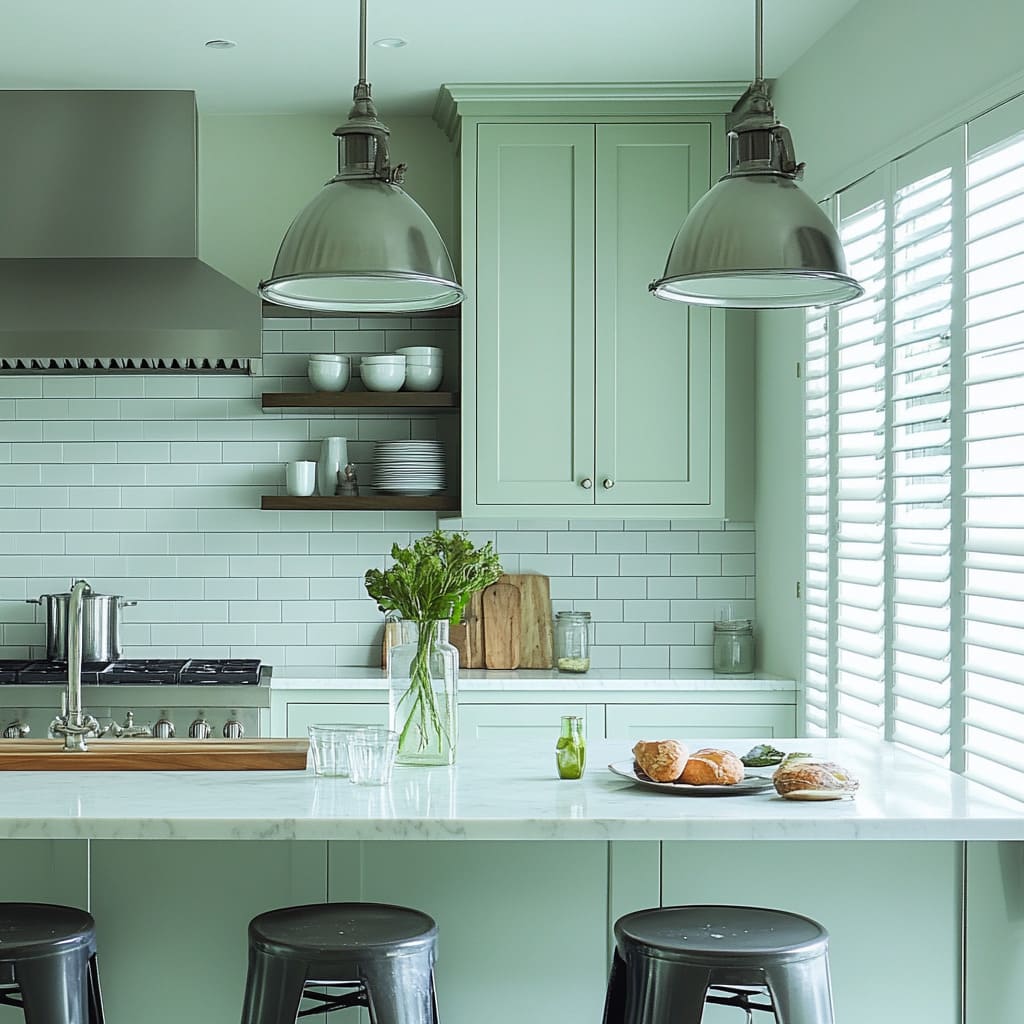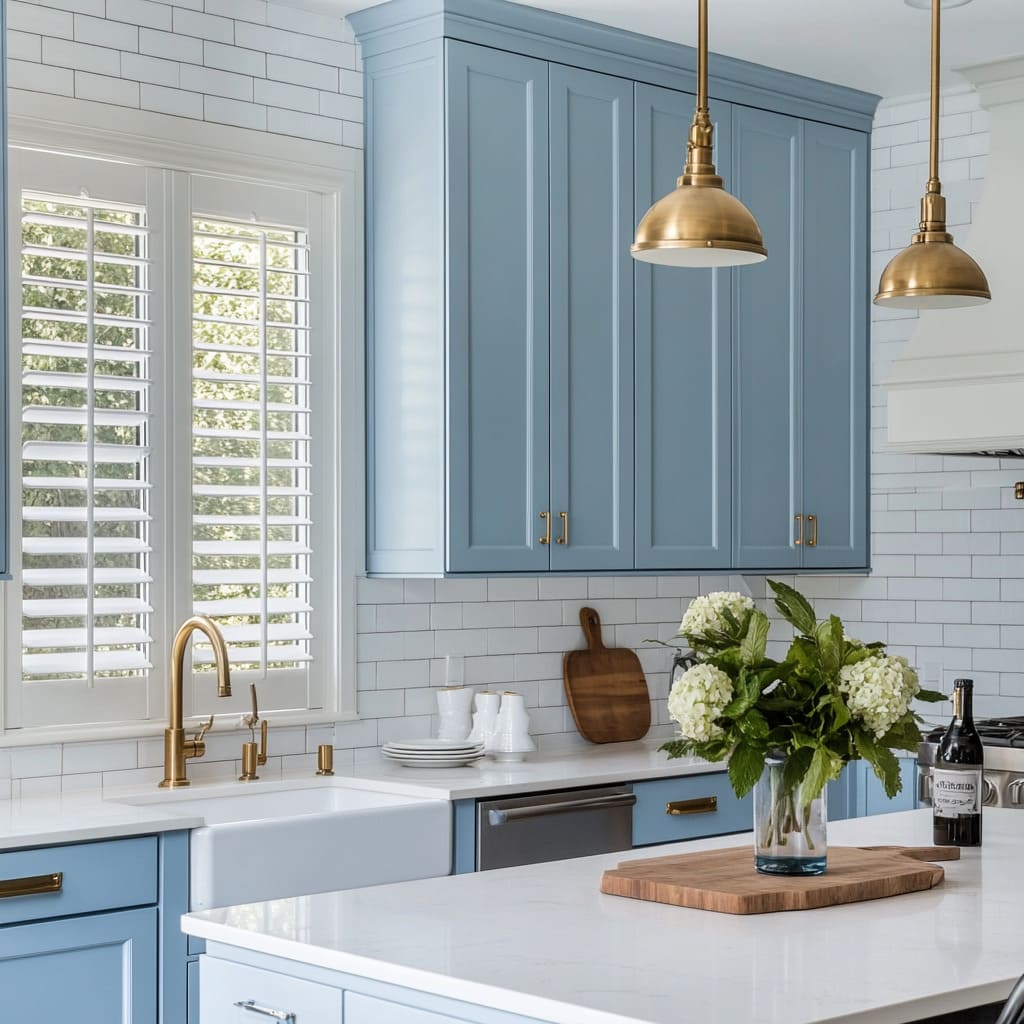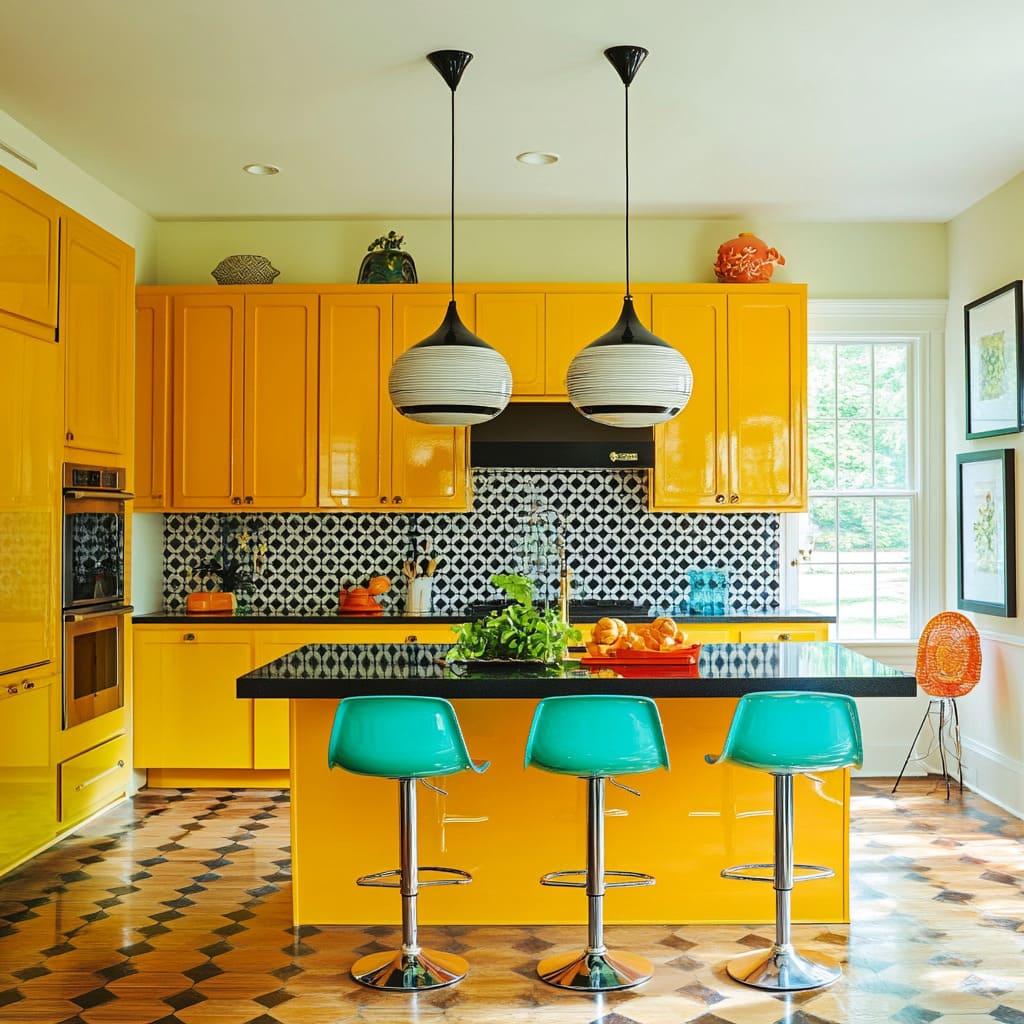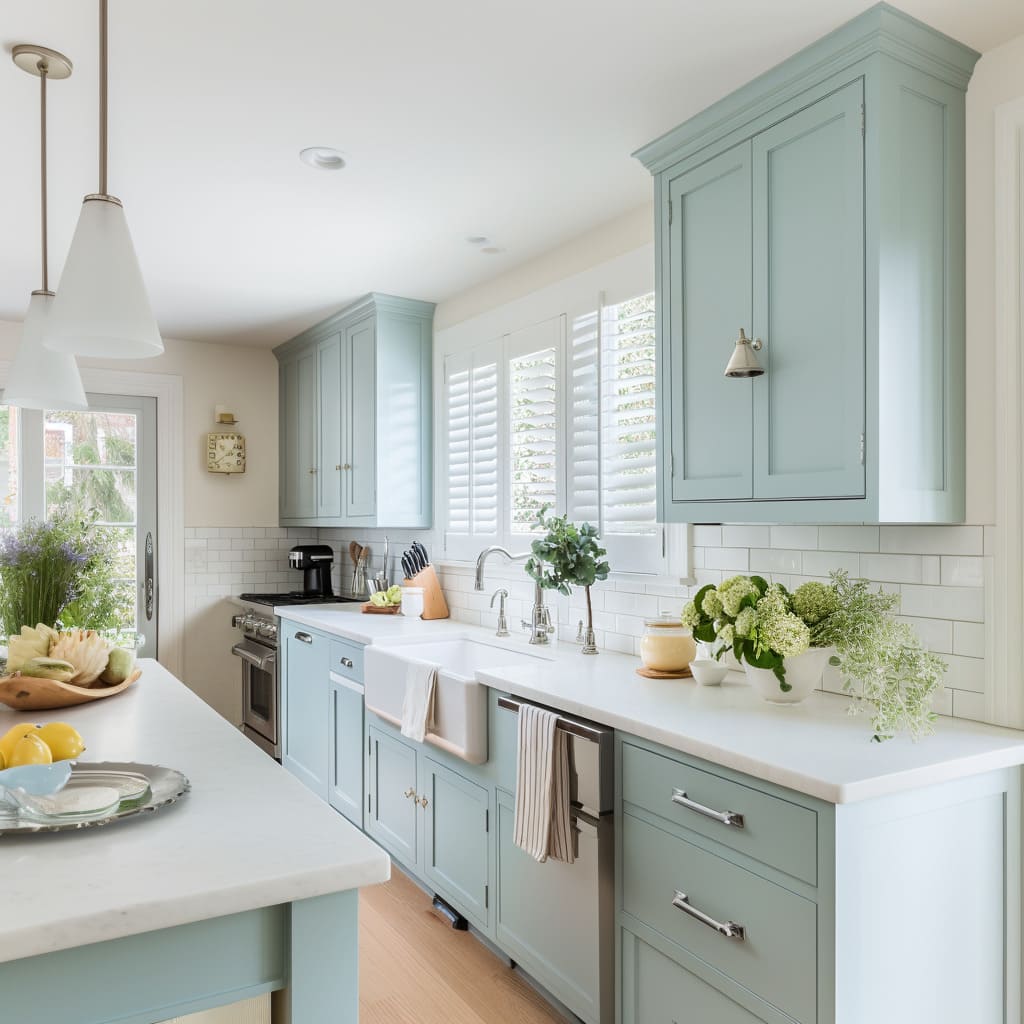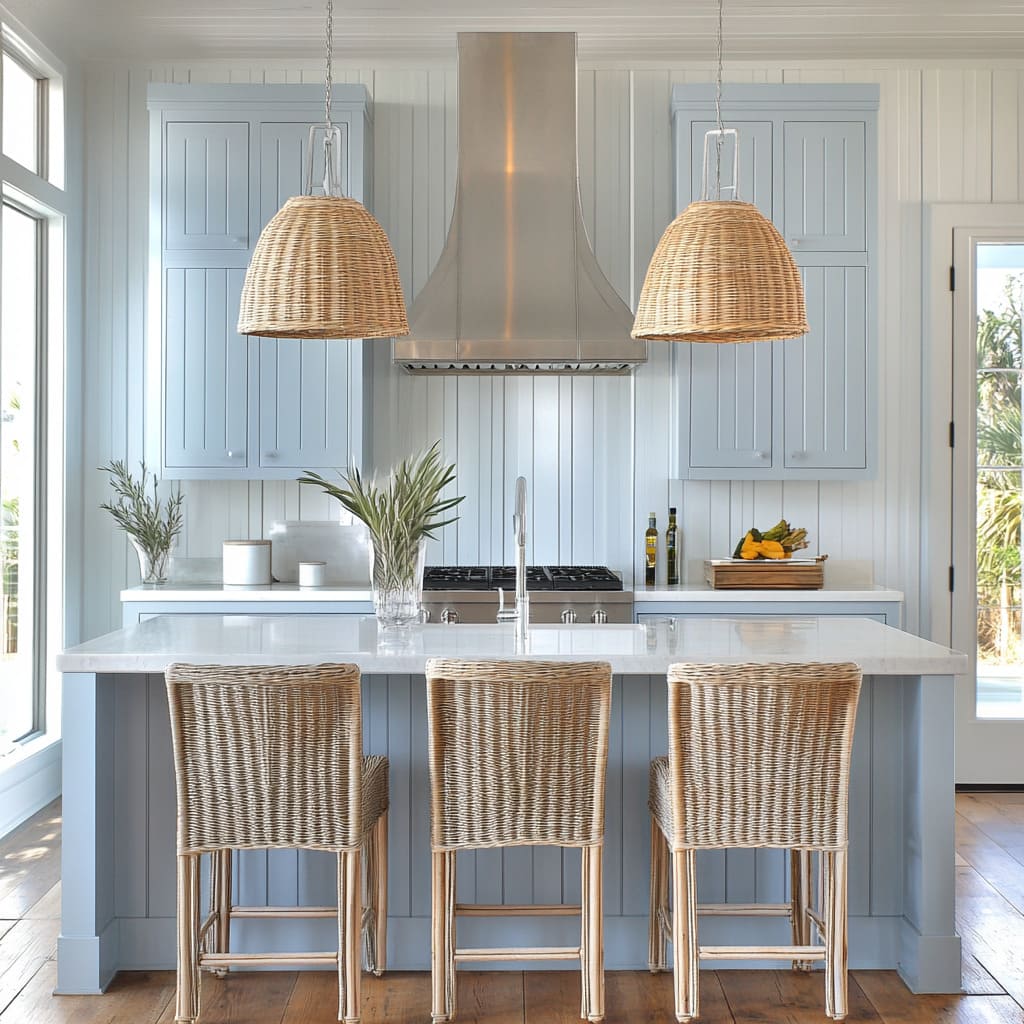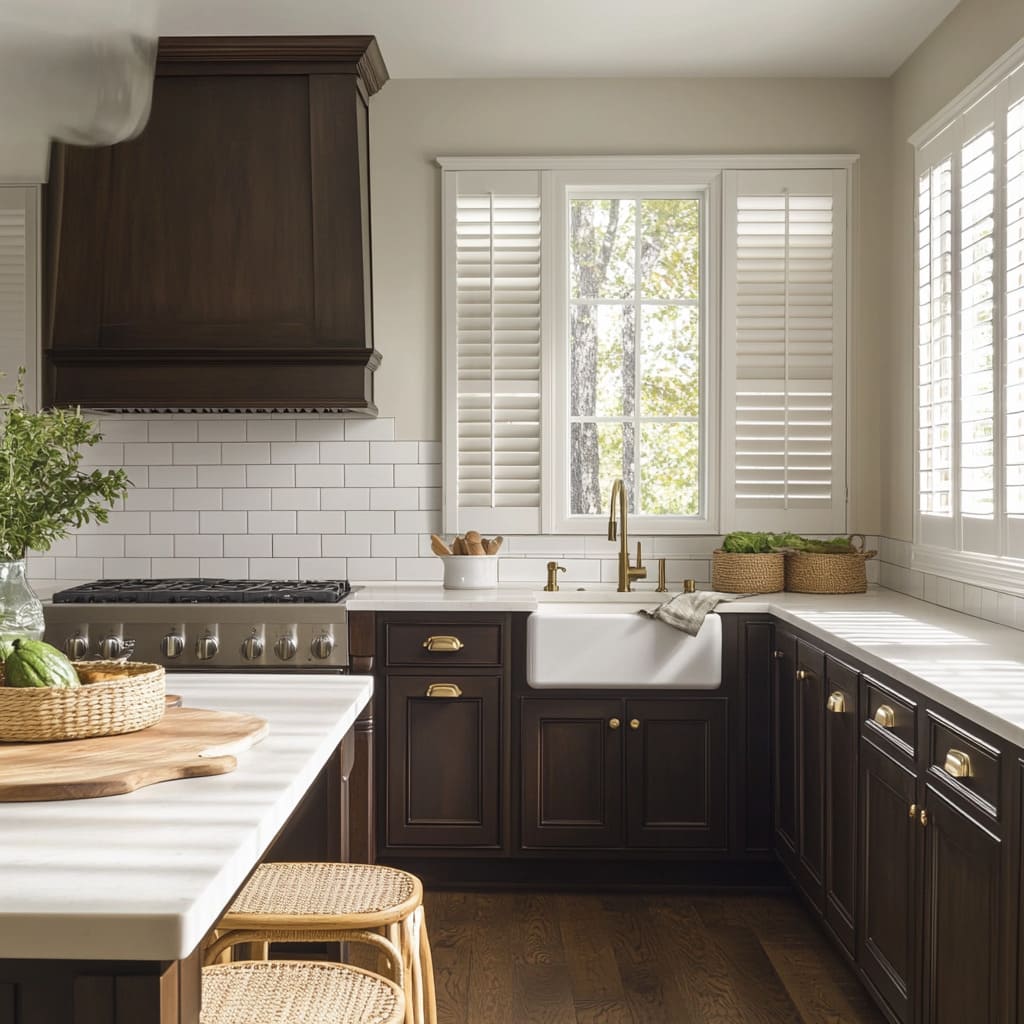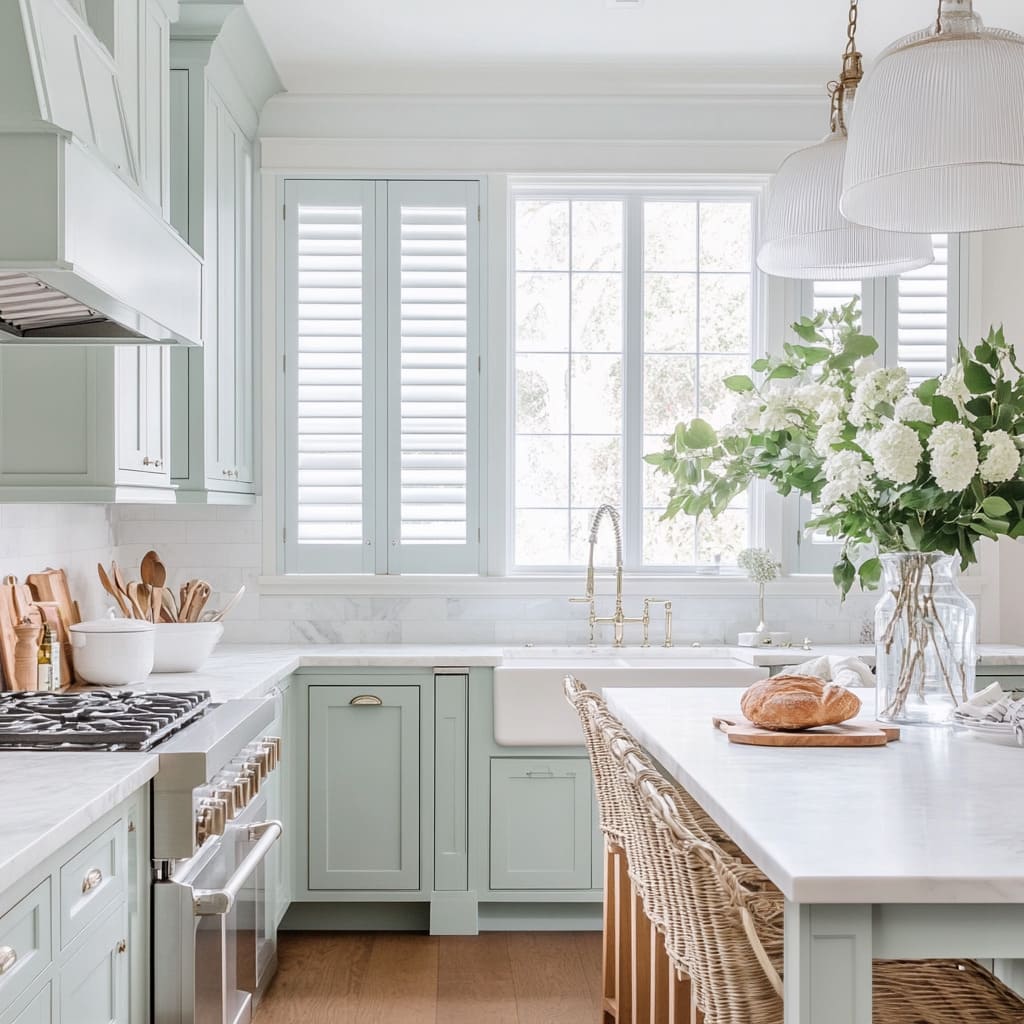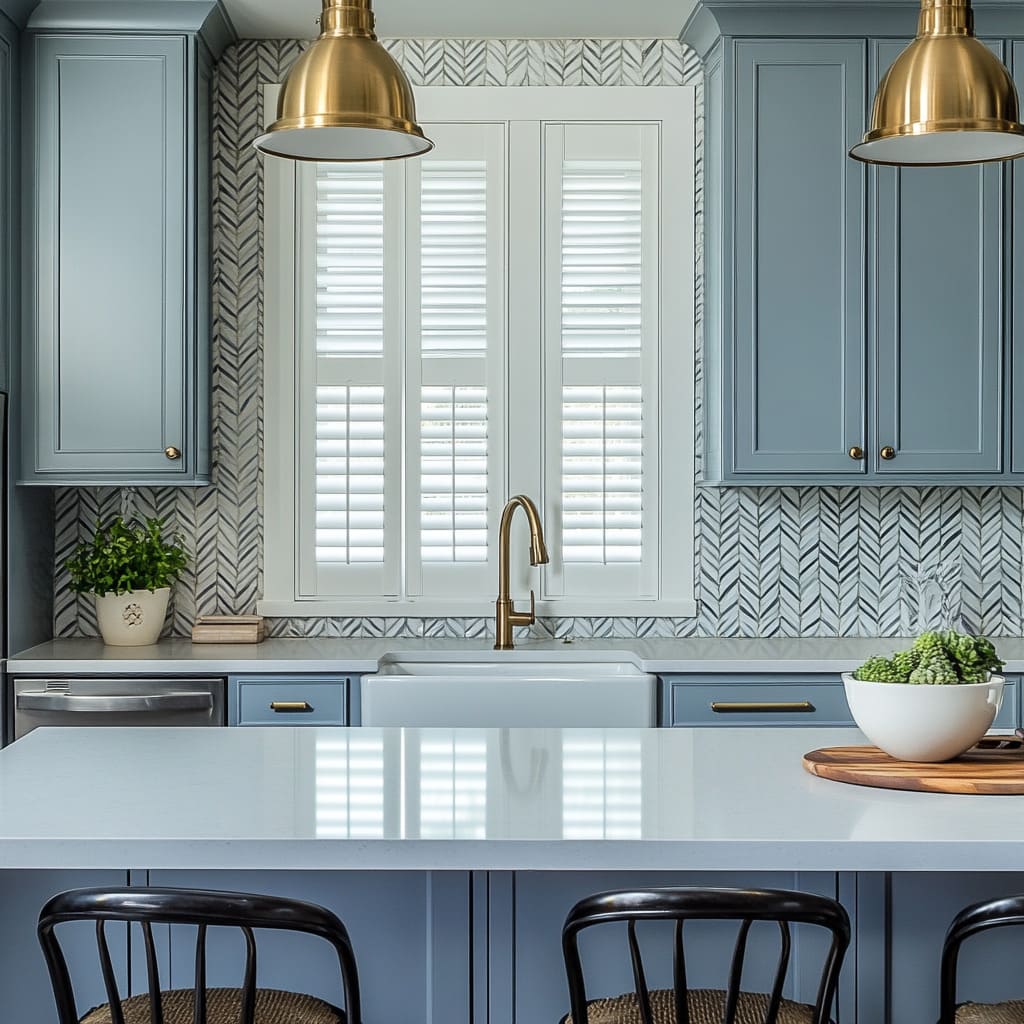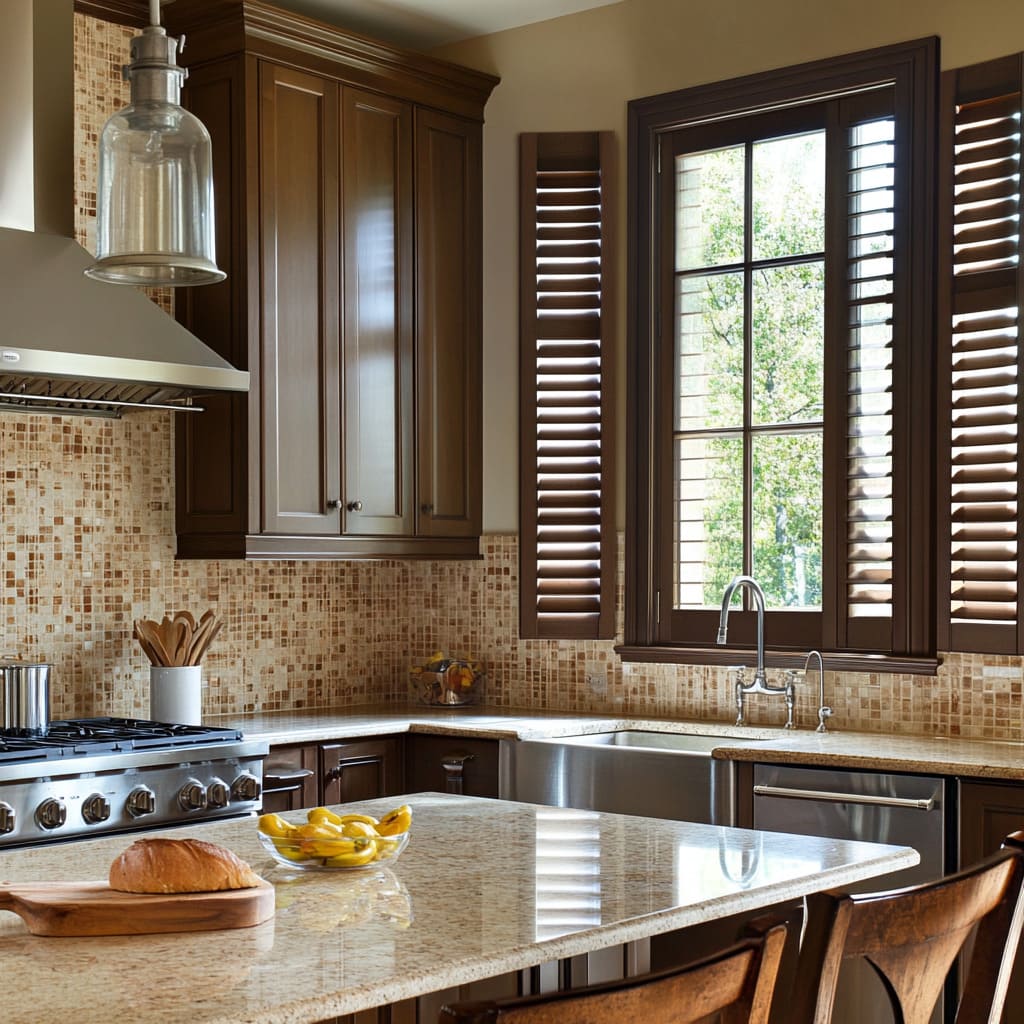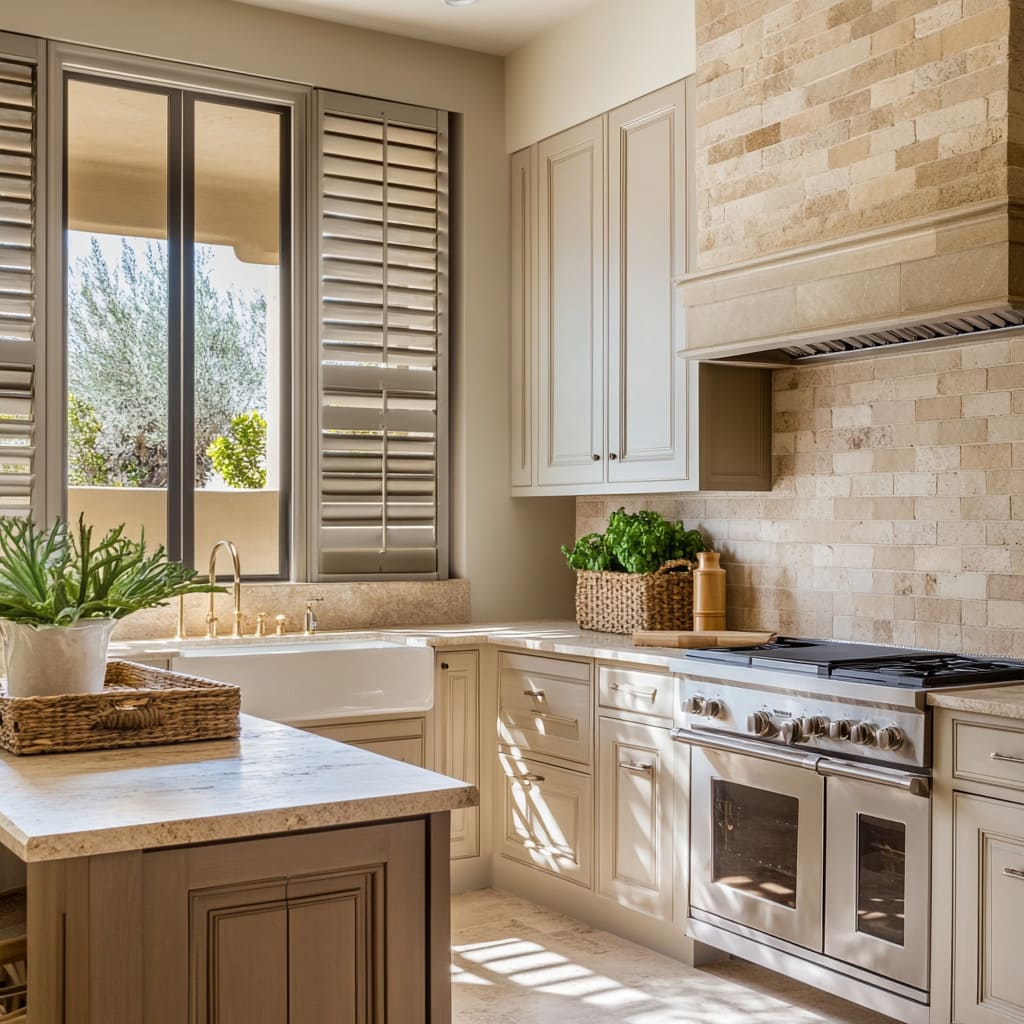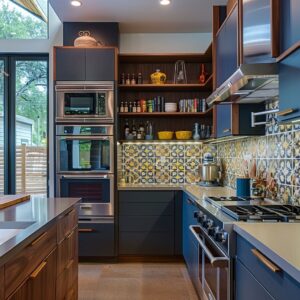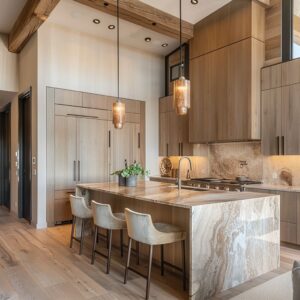Kitchen cabinets play a central role in defining the look and feel of a kitchen. They are not only functional, providing essential storage, but also serve as one of the most visible elements in the room.
As such, the color of kitchen cabinets can significantly impact the overall aesthetic of the space. Whether you’re aiming for a classic, modern, or eclectic look, the choice of color is a powerful tool in setting the tone for your kitchen
Color has the unique ability to transform a space, influencing everything from the mood to the perceived size of the room. When it comes to the kitchen, where we spend a considerable amount of time, the right color can make the space feel more inviting, energizing, or calming.
For those looking to revamp their kitchen on a budget, changing the color of the cabinets through painting or refinishing is an effective and affordable option. With the right choice of kitchen paint colors, you can breathe new life into your kitchen without the need for a full renovation
Revamping your kitchen doesn’t have to involve replacing all the cabinetry or spending a fortune. Instead, by focusing on colors for kitchen cabinets, you can create a fresh, updated look that aligns with your personal style and the overall design of your home.
In this section, we will explore the impact of color in kitchen design and discuss how coordinating cabinet colors with other elements in the room can result in a cohesive and appealing kitchen
Understanding the Impact of Cabinet Colors
The Role of Color in Kitchen Design
Color is a fundamental aspect of design, and in the kitchen, it plays a crucial role in setting the mood and style. The kitchen is often the heart of the home, a place where families gather, meals are prepared, and memories are made.
Therefore, the color you choose for your cabinets can greatly influence the atmosphere of this important space
For instance, lighter shades like soft gray or creamy white can make a kitchen feel more spacious and open. These colors reflect light, which helps to create an airy, bright environment, ideal for kitchens with limited natural light.
On the other hand, darker colors such as navy blue or deep green can add a sense of coziness and depth, making the space feel more intimate and sophisticated
Different colors also evoke different emotions. Warm colors, like peach or blush pink, can create a welcoming and comforting ambiance, making the kitchen feel inviting and homey.
Cool colors, like soft blues and greens, are known for their calming effect, bringing a sense of tranquility to the space. When choosing the best kitchen colors, it’s important to consider how you want the kitchen to feel and how the color of the cabinets will contribute to that atmosphere.
The psychology of color also plays a role in how we perceive the size and scale of the kitchen. Lighter colors can make a small kitchen appear larger, while darker colors can make a large kitchen feel more cozy and grounded.
Understanding these effects is essential when selecting the right kitchen cabinet paint schemes to achieve the desired outcome
Matching Cabinet Colors with Existing Elements
A well-coordinated kitchen design involves more than just selecting a color you like for the cabinets. It’s crucial to consider how the chosen cabinet color will interact with other elements in the kitchen, such as the countertops, backsplash, flooring, and wall colors.
This coordination ensures a harmonious and balanced look, where all components work together to create a cohesive design
For example, in a kitchen with blush pink cabinets, pairing them with marble countertops creates a sophisticated and elegant contrast. The cool veining of the marble complements the warmth of the pink, resulting in a balanced and visually pleasing combination.
Similarly, peach-colored cabinets can be beautifully offset by a white subway tile backsplash, which adds a crisp and clean look while allowing the cabinetry to take center stage
When exploring kitchen color ideas, it’s also important to consider the finishes and materials used in the kitchen. A natural wood countertop or butcher block can add warmth and texture, providing a contrast to painted cabinets and adding depth to the overall design.
Likewise, choosing the right hardware, such as matte black handles or brushed gold knobs, can enhance the color of the cabinets and tie the whole look together. The flooring also plays a significant role in the overall design.
For instance, dark wood flooring can ground light-colored cabinets, while light wood or tile flooring can make a kitchen with darker cabinets feel more open. The key is to create a balance where each element complements the others, resulting in a unified and cohesive space
In conclusion, understanding the role of color in kitchen design and how to match cabinet colors with existing elements is crucial for creating a kitchen that feels well-planned and visually appealing. By carefully selecting and coordinating colors of cabinets for kitchen, you can transform the space in a way that reflects your personal style and meets the functional needs of your home.
Whether you opt for bold, dramatic hues or soft, understated tones, the right color choice can make all the difference in your kitchen’s overall look and feel
Uncover the Potential of Your Budget!
Discover the Kitchen Revamp Possibilities Within Your Reach!
[budget_renovation_calculator]
Popular Kitchen Cabinet Color Ideas
Soft Neutrals for a Timeless Look
Soft neutrals, such as warm gray or taupe, are an excellent choice for those seeking a kitchen design that stands the test of time. These subtle hues offer a calming effect, creating a tranquil environment that feels welcoming and comfortable.
One of the key advantages of using soft neutrals in the kitchen is their versatility. They blend seamlessly with a variety of other colors and materials, making them adaptable to changes in decor over time
A kitchen adorned with warm gray cabinets, for example, exudes understated elegance. The color serves as a neutral backdrop, allowing other elements in the space, such as the countertops, backsplash, and flooring, to shine without competition.
Taupe cabinets offer a similar effect, adding a touch of warmth while remaining firmly in the neutral territory. These kitchen colors are perfect for creating a space that feels cohesive and well-thought-out, regardless of the style or era
The adaptability of soft neutrals also means they pair well with different finishes and textures. Whether you choose a matte or satin finish, these colors can enhance the natural beauty of wood, stone, or metal accents.
This flexibility makes neutral tones a popular choice for homeowners who want a kitchen that feels timeless, yet modern, and easily adjustable to future design changes
Warm and Earthy Tones
For those who prefer a kitchen that feels warm and inviting, earthy tones like peachy coral and warm beige are ideal. These colors bring a sense of coziness to the space, making it a welcoming area for family and friends to gather.
Peachy coral cabinets, for instance, add a subtle pop of color without overwhelming the room. The warmth of this hue creates an atmosphere that feels lively yet intimate, perfect for a kitchen that serves as the heart of the home
Warm beige, on the other hand, offers a softer approach to earthy tones. Beige cabinets provide a neutral base with a hint of warmth, making the kitchen feel light and airy while still grounded in comfort.
This color is particularly effective when paired with natural materials, such as wood countertops or flooring. The combination of warm beige and natural wood creates a harmonious look that is both rustic and refined, adding character to the kitchen without sacrificing elegance.
These earthy tones are also incredibly versatile, working well within various kitchen color schemes. They can be complemented with accents of white, cream, or even darker shades like espresso or black, depending on the desired effect.
This adaptability makes them a great choice for kitchens where creating a cozy, inviting atmosphere is the priority
Bold and Dramatic Colors
For those looking to make a statement, bold colors like deep navy blue or muted olive green offer a dramatic and sophisticated option for kitchen cabinets. These colors add depth and richness to the space, making the kitchen feel more intimate and luxurious.
Deep navy blue cabinets, for instance, bring a sense of elegance and formality to the kitchen, while still maintaining a modern edge. This color is particularly striking when paired with light countertops and backsplashes, creating a balanced contrast that enhances the overall design
Muted olive green is another bold choice that adds a unique touch to the kitchen. This earthy yet refined color brings a natural feel to the space, evoking a connection to the outdoors while still being rich and sophisticated.
Olive green cabinets can create a warm and welcoming environment, especially when paired with complementary materials like natural stone countertops or brass hardware
When using bold colors in the kitchen, it’s important to balance them with lighter or neutral elements to avoid overwhelming the space. For example, pairing dark cabinets with a white or light gray backsplash and countertops can help create a visual balance that keeps the room feeling open and airy.
This approach ensures that bold colors remain the focal point without making the kitchen feel closed in or heavy
Soft and Playful Pastels
Pastel colors such as blush pink or soft powder blue bring a fresh and modern feel to the kitchen, offering a playful yet elegant alternative to more traditional colors. Blush pink cabinets, for example, add a touch of whimsy and charm, creating a kitchen that feels light, airy, and welcoming.
This soft hue can brighten up the space and bring a unique character to the kitchen, making it stand out while still being subtle and sophisticated
Soft powder blue is another pastel option that works beautifully in the kitchen. This gentle color evokes a sense of calm and relaxation, making the kitchen a peaceful place to cook, dine, and gather.
Powder blue cabinets can be paired with contrasting elements like gold hardware or black accents to add a touch of elegance and sophistication. These contrasting details help to ground the lightness of the pastels, creating a balanced and well-rounded design.
Pastels are particularly effective in kitchens with plenty of natural light, as the light enhances the soft tones and makes the space feel bright and cheerful. These kitchen cabinet color ideas are perfect for homeowners looking to create a kitchen that feels modern, fresh, and full of personality
In summary, whether you prefer soft neutrals, warm earthy tones, bold dramatic colors, or playful pastels, there is a wide range of kitchen paint ideas that can transform your space on a budget. Each color choice brings its own unique effect, allowing you to create a kitchen that reflects your personal style while enhancing the overall look and feel of your home.
With careful consideration of kitchen color schemes, you can achieve a beautiful and cohesive design that revitalizes your kitchen and makes it a place you love to spend time in
Incorporating Contrasts and Accents
Pairing Bold Cabinets with Light Countertops
Creating a visually balanced kitchen often involves the thoughtful pairing of bold cabinet colors with lighter countertops. This combination not only adds contrast but also prevents the space from feeling too heavy or overpowering.
For example, navy blue cabinets paired with light quartz countertops create a striking contrast that feels both modern and timeless. The deep, rich color of the cabinets anchors the room, while the light countertops reflect natural and artificial light, brightening the space and making it feel more open
Similarly, peach cabinets combined with white marble countertops offer a fresh and inviting aesthetic. The soft warmth of the peach contrasts beautifully with the cool, crisp marble, resulting in a kitchen that feels both vibrant and elegant.
This pairing allows the cabinets to stand out while the marble provides a classic backdrop that adds a touch of luxury without overwhelming the overall design
These contrasts are not just about visual appeal; they also play a crucial role in the functionality of the kitchen. Lighter countertops are typically more forgiving when it comes to hiding minor spills or crumbs, making them a practical choice for busy households.
At the same time, the bold cabinets add personality and depth, ensuring the kitchen feels grounded and cohesive. This balance between light and dark is key to creating color schemes for kitchens with dark cabinets that feel inviting rather than closed in
Adding Texture and Depth with Complementary Materials
Incorporating different textures and materials into the kitchen design adds depth and dimension, making the space more engaging and layered. One effective way to achieve this is by pairing your chosen cabinet color with complementary materials such as butcher block countertops, natural wood elements, or marble backsplashes.
Butcher block countertops, for example, introduce a warm, organic texture that contrasts with the sleek finish of painted cabinets. This natural wood surface adds a tactile quality to the kitchen, making it feel more inviting and homely.
When paired with popular kitchen colors like soft neutrals or warm earth tones, the butcher block enhances the overall warmth of the space, creating a kitchen that feels both comfortable and stylish
Marble backsplashes, on the other hand, bring a sense of elegance and refinement to the kitchen. The natural veining in marble adds visual interest and complements a range of modern kitchen colors, from soft pastels to bold hues.
The smooth, polished surface of marble contrasts with the matte finish of many kitchen cabinets, adding a layer of sophistication and enhancing the overall texture of the space. In addition to countertops and backsplashes, other natural elements like wooden floating shelves or rustic beams can be used to add texture and depth.
These elements not only provide practical storage solutions but also break up the monotony of continuous cabinetry, adding visual variety and making the kitchen feel more dynamic
Using Hardware and Accessories to Enhance Color Choices
The choice of hardware and accessories plays a significant role in tying together the overall design of the kitchen. Hardware such as handles, knobs, and pulls can either complement or contrast with the cabinet color, enhancing the design and adding a touch of personality.
Matte black hardware, for instance, is a popular choice for modern kitchens. It offers a sleek, understated look that works well with a variety of cabinet colors, from deep navy blue to soft beige.
Black hardware provides a sharp contrast that adds definition to the cabinets without drawing too much attention away from the overall design. This makes it a good option for those seeking to create color schemes for kitchens with dark cabinets that feel balanced and cohesive
Gold handles or knobs, on the other hand, introduce a touch of luxury and warmth, particularly when paired with pastel or light-colored cabinets. Gold hardware can elevate the overall look of the kitchen, adding a bit of glamour without being overbearing.
It works beautifully in colorful kitchens where the aim is to add a subtle yet impactful accent that complements the chosen cabinet color
Beyond hardware, accessories like pendant lights, decorative trays, and countertop decor can further enhance the kitchen’s color scheme. For example, industrial-style pendant lights in matte black can echo the hardware and provide a cohesive look, while wooden cutting boards or ceramic dishes can add warmth and texture that complements the cabinetry.
Floating shelves in natural wood tones can also add an element of warmth and provide a perfect backdrop for displaying kitchen essentials and decorative items
These accessories not only add to the visual appeal of the kitchen but also allow for personalization. By carefully selecting accessories that either complement or contrast with the cabinet colors, you can create a space that reflects your style and enhances the overall design.
This thoughtful approach to incorporating contrasts and accents ensures that your kitchen feels well-balanced, functional, and visually pleasing
In conclusion, incorporating contrasts and accents through the pairing of bold cabinets with light countertops, adding texture with complementary materials, and enhancing color choices with the right hardware and accessories, creates a kitchen that is both functional and aesthetically pleasing. These elements work together to produce a space that feels balanced, inviting, and full of character.
By paying attention to these details, you can achieve a kitchen design that not only looks beautiful but also feels harmonious and well-integrated into your home
Practical Tips for Painting and Refinishing Cabinets
Choosing the Right Paint and Finish
When it comes to painting kitchen cabinets, selecting the right paint and finish is crucial for both durability and aesthetics. The kitchen is a high-traffic area, so it’s important to choose a paint that can withstand the daily wear and tear, including exposure to moisture, heat, and frequent cleaning
For a long-lasting and easy-to-maintain finish, consider using a semi-gloss or satin paint. These finishes offer a good balance between sheen and durability, making them ideal for kitchen cabinets.
Semi-gloss paint is particularly resistant to moisture and is easy to wipe clean, which is a significant advantage in the kitchen. Satin finishes, on the other hand, provide a softer, more muted sheen while still being durable and easy to clean
When choosing the color, think about how it will interact with the existing elements in your kitchen, such as countertops, backsplash, and flooring. For example, if your kitchen has neutral tones, you might want to introduce a pop of color with the cabinets to create a focal point.
Conversely, if you have bold countertops or flooring, selecting a more subdued cabinet color can help balance the overall look
It’s also wise to test the paint color in your kitchen before committing fully. Paint a small section of the cabinet and observe how the color looks at different times of the day under various lighting conditions.
This step is essential to ensure that you’ve chosen nice kitchen colors that you’ll love in every light
DIY vs. Professional Help
Deciding whether to paint your cabinets yourself or hire a professional depends on several factors, including your budget, time, and confidence in your DIY skills.
Both options have their pros and cons.
DIY Painting:
Painting your cabinets yourself can be a rewarding and cost-effective project.
It allows you to have full control over the process, from choosing the paint and finish to applying the final coat. This option is particularly appealing if you enjoy hands-on projects and want to save on labor costs
However, DIY painting requires time, patience, and attention to detail. Prepping the cabinets, including cleaning, sanding, and priming, is critical for achieving a smooth and durable finish.
Skipping these steps can lead to uneven paint coverage and a less professional-looking result. Additionally, handling tricky areas like corners, edges, and hardware removal can be challenging for those with limited experience
Professional Help:
Hiring a professional painter ensures a high-quality finish with less effort on your part. Professionals have the experience and tools needed to deliver a smooth, even coat of paint that is free from brush marks and other imperfections.
This option is ideal if you want a flawless finish and don’t have the time or inclination to tackle the project yourself
The main drawback of hiring a professional is the cost. Professional services can be expensive, particularly if you choose premium paints or if your kitchen cabinets require extensive preparation work.
However, the investment may be worth it for those seeking a guaranteed result with minimal hassle
Step-by-Step Guide to Painting Kitchen Cabinets
If you decide to take on the project yourself, following a step-by-step guide will help ensure success. Here’s how to approach painting kitchen cabinets for a long-lasting and high-quality finish:
Preparation:
Begin by removing all cabinet doors, drawers, and hardware.
Label each door and drawer to make reassembly easier. Clean the surfaces thoroughly with a degreaser to remove any dirt, grease, or residue.
Next, sand the cabinets lightly to create a smooth surface for the primer to adhere to. Wipe away dust with a damp cloth
Priming:
Apply a high-quality primer designed for kitchen cabinets. Priming is essential as it seals the wood, blocks stains, and provides a good base for the paint.
Use a brush to reach corners and edges, and a roller for larger, flat surfaces. Allow the primer to dry completely according to the manufacturer’s instructions
Painting:
Once the primer is dry, it’s time to paint. Choose a high-quality paint that offers durability and is suitable for kitchen environments.
Apply the paint in thin, even coats using a brush for detailed areas and a roller for flat surfaces. Allow each coat to dry fully before applying the next.
Depending on the color and coverage, you may need two or three coats to achieve a smooth, even finish
Handling Tricky Areas:
Pay special attention to corners, edges, and intricate details. Use a small, angled brush to reach tight spots and ensure even coverage.
When painting drawers and doors, it’s helpful to elevate them on painter’s pyramids or similar supports to avoid contact with the surface below
Reassembly:
Once the paint is fully dry, reinstall the doors, drawers, and hardware. Take care to align everything correctly, and make sure all screws are tightened securely.
If you’ve chosen to replace the hardware, now is the time to add those finishing touches.
Final Touches:
Inspect your work for any touch-ups or areas that may need an extra coat.
Once satisfied, enjoy your newly refreshed kitchen with its updated, vibrant cabinetry
By following these steps and considering good colors for kitchen cabinets, you can achieve a professional-looking finish even on a budget. Whether you opt for soft neutrals, bold hues, or something in between, painting your kitchen cabinets is a great way to refresh the space without a complete overhaul.
With the right preparation and attention to detail, your kitchen can be transformed into a beautiful, functional space that reflects your personal style
Case Studies
In this section, we will explore a variety of kitchen designs that have been discussed in detail, showcasing how different cabinet colors have been effectively utilized to transform each space. These examples provide valuable insight into how thoughtful color choices can significantly impact the overall look and feel of a kitchen
One standout example is a kitchen that features deep navy blue cabinets paired with light quartz countertops. This bold choice in cabinet color anchors the kitchen, creating a sophisticated and modern ambiance.
The light countertops serve as a balancing element, reflecting light and ensuring that the space does not feel too dark or enclosed. The contrast between the navy blue and quartz adds a striking visual interest, demonstrating how the right combination of kitchen color ideas can elevate the entire room
Another notable design involves soft blush pink cabinets paired with a herringbone marble backsplash. This kitchen exudes a warm and inviting atmosphere, with the blush pink adding a subtle pop of color that feels both fresh and timeless.
The marble backsplash introduces texture and a touch of luxury, complementing the soft pastel tones of the cabinets. This design is a perfect example of how using lighter, more playful colors for kitchen cabinets can create a bright and cheerful environment while maintaining elegance
A different approach can be seen in a kitchen featuring muted olive green cabinets with butcher block countertops. The earthy tones of the cabinets evoke a natural, grounded feel, while the warm wood of the butcher block adds texture and warmth.
This combination creates a harmonious blend that feels cozy and inviting, making it a perfect choice for those who appreciate a more rustic, down-to-earth kitchen aesthetic
These examples illustrate how carefully selected colors for kitchen cabinets, combined with complementary materials and finishes, can create kitchens that are not only beautiful but also functional and personalized to the homeowner’s style. Each of these kitchens showcases a different aspect of how color can be used to achieve a specific mood or design goal, providing inspiration for anyone looking to revamp their kitchen on a budget
Before and After Transformations
When it comes to kitchen revamps, changing the cabinet color is one of the most impactful and budget-friendly ways to transform the space. Let’s look at some before and after transformations that highlight the power of color.
In one transformation, a dated kitchen with dull, dark wood cabinets was revitalized by painting the cabinets a bright, crisp white. The change was dramatic—instantly opening up the space and making it feel more modern and airy.
This simple yet effective use of kitchen paint colors brought new life to the room, proving that even a basic color change can have a significant impact
Another transformation involved a kitchen with traditional oak cabinets that had started to feel a bit too heavy and old-fashioned. By painting the cabinets a soft, muted gray and adding new black hardware, the kitchen was given a contemporary makeover.
The gray provided a neutral, versatile base that allowed other elements like the backsplash and countertops to stand out. The updated color scheme made the kitchen feel more cohesive and modern, all without the need for a complete remodel
A more colorful example involved a kitchen that originally featured plain white cabinets, which felt stark and lacked personality. The cabinets were transformed by painting them a bold teal, bringing in a vibrant, coastal feel that matched the homeowner’s style.
Paired with new brass hardware and a light wood floor, the result was a bright and cheerful kitchen that felt entirely new. These before and after transformations show how altering the kitchen cabinet color can create a profound change in the overall aesthetic and atmosphere of the kitchen.
It’s a cost-effective way to refresh your space, proving that the best kitchen colors are those that reflect your style and enhance the beauty of your home
Conclusion
Selecting the right kitchen cabinet color is a key factor in revamping your kitchen on a budget. As we’ve seen through various examples, color can completely transform a kitchen’s look and feel, making it fresh, modern, and reflective of your personal style.
Whether you opt for bold, dramatic hues or soft, neutral tones, the right choice can bring new life to your kitchen, creating a space where you’ll love to cook, eat, and gather with family and friends
Don’t be afraid to experiment with different finishes and combinations to find what works best for your space. With the right kitchen cabinet color ideas and a bit of creativity, you can achieve a beautiful kitchen makeover that fits your budget and meets your design goals

